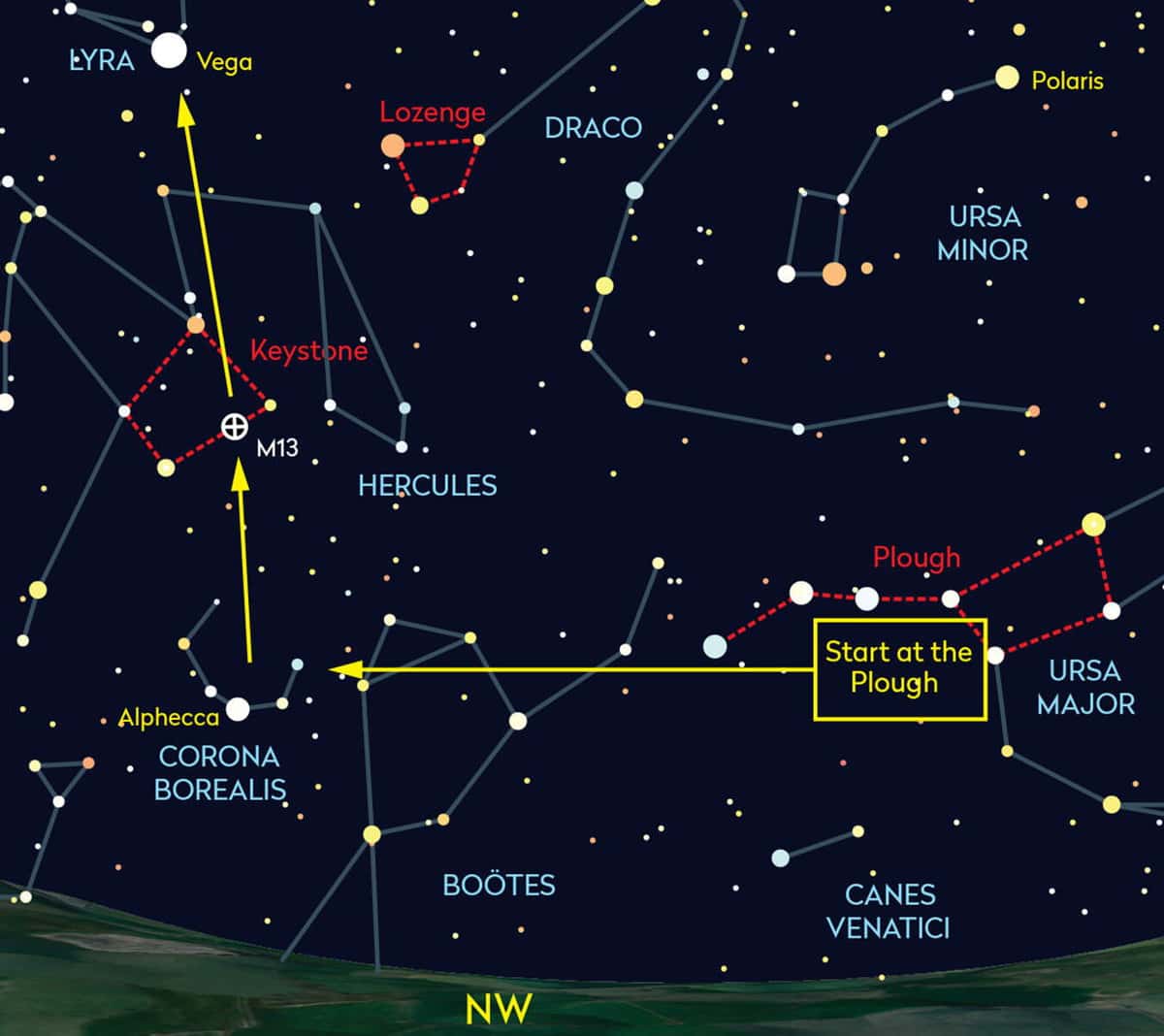
Currently, there are additional cumulative discounts (ranging from 2% to 25%) available for 58,757 educational establishments. In order to determine the applicable discount for all staff members of your educational institution, please sign in to your personal Infoworks account.


Course for professional growth
Using tourist methods to teach geography to children with disabilities.
We can combine your educational institution’s discount with this promotion (the amount depends on how many of your colleagues have completed Infowrok courses).
Currently, 58,757 educational institutions are offering additional discounts (ranging from 2% to 25%). To determine the discount applicable to all employees of your educational institution, log in to your personal Infoworks account.


Course for professional development
Specifics of preparing for the implementation of GPE in monitoring the educational quality of students in the subject “Geography” within the framework of implementing the FSES SES.
In addition to this offer, we can include the discount provided by your educational institution (which depends on how many of your colleagues have taken Infowork courses).
Currently, there are 58,757 educational institutions that receive additional cumulative discounts (ranging from 2% to 25%). To find out which discount is applicable to all employees of your educational institution, please log in to your personal Infoworks account.


Exploring Egypt. The Architectural Wonders of Ancient Egypt
A Breakdown of the Presentation Slide by Slide:

Slide 1: Constellations in the Autumn Sky
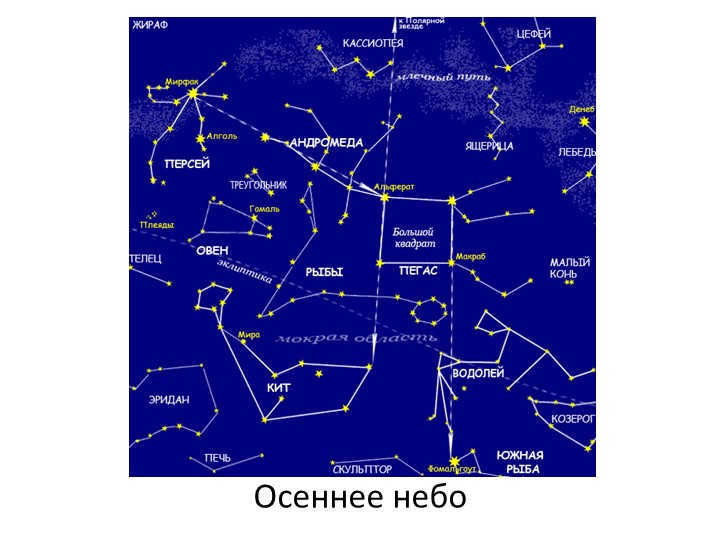
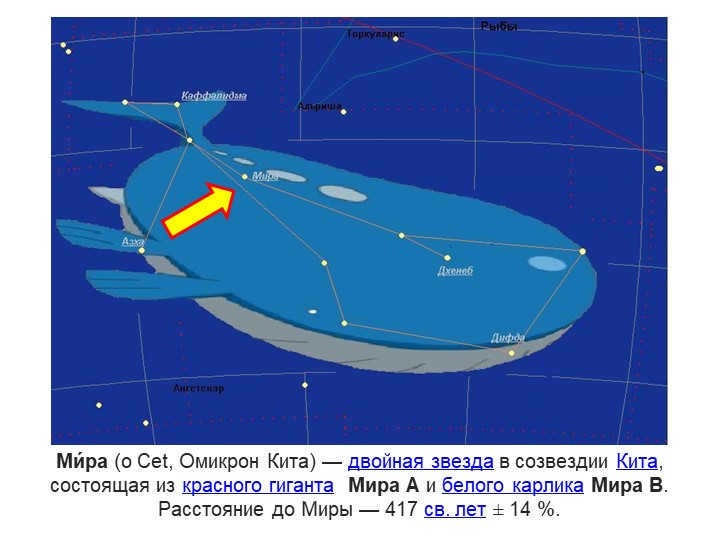
Slide 4 Mira (also known as ο Cet and Omicron Cetus) is a binary star system located in the constellation Cetus. It is composed of two stars, Mira A, a red giant, and Mira B, a white dwarf. The distance to Mira is estimated to be around 417 light-years with an uncertainty of about 14%.
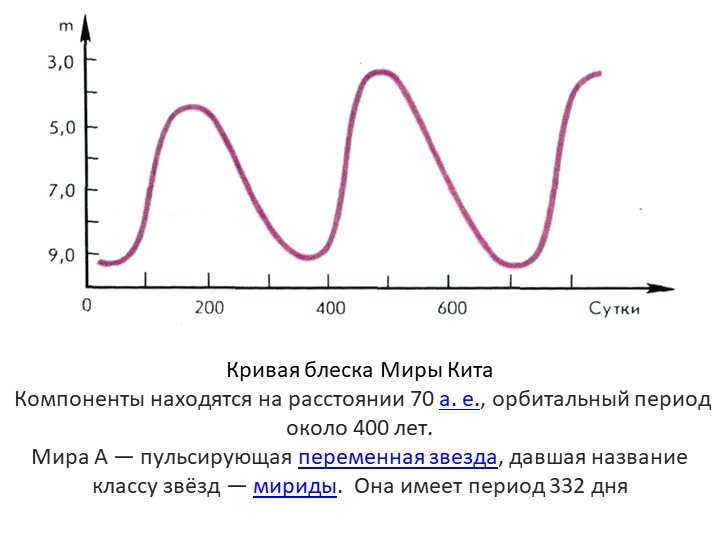
Slide 5: The light curve of Mira Kita
Both components of Mira Kita are separated by a distance of 70 astronomical units and they have an orbital period of approximately 400 years.
Mira A, which is one of the components, is a pulsating variable star and it is the star that gave its name to a class of stars known as Mirids. This star has a period of 332 days.
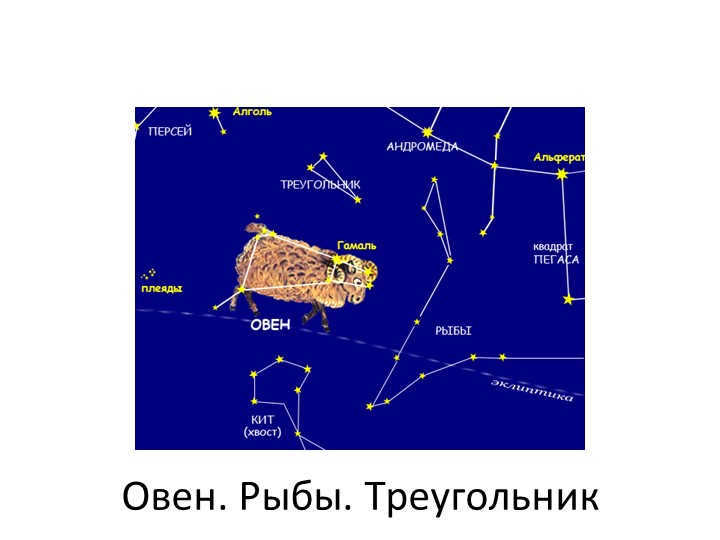
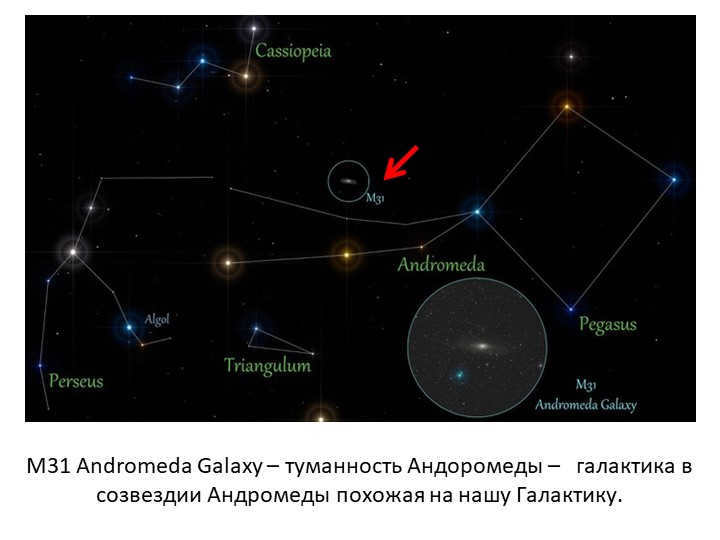
The Andromeda Galaxy, also known as the Andromeda Nebula, is a galaxy located in the constellation of Andromeda. It is similar to our own galaxy, the Milky Way.
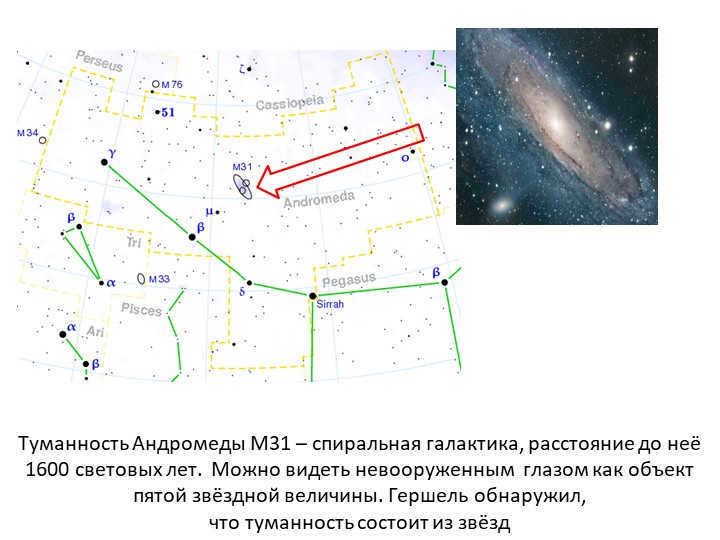

Slide 9: The M31 Andromeda Nebula is a spiral galaxy situated at a distance of 1600 light years. It is visible to the naked eye and appears as a fifth magnitude star. Herschel made the discovery that the nebula is composed of stars.
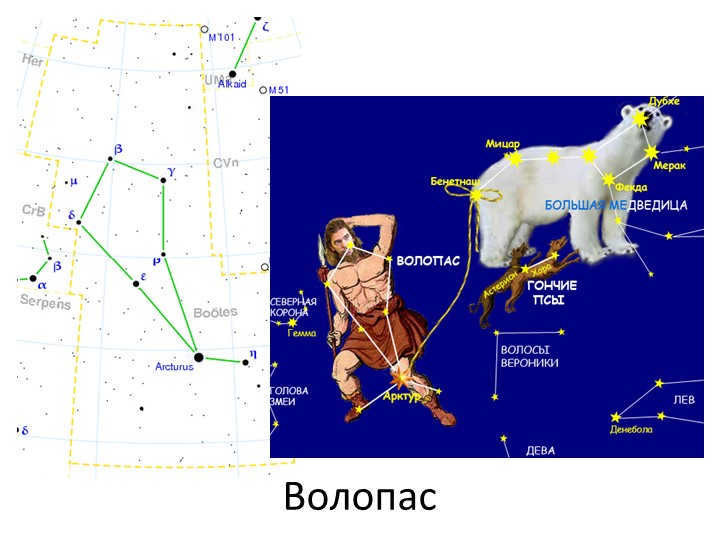
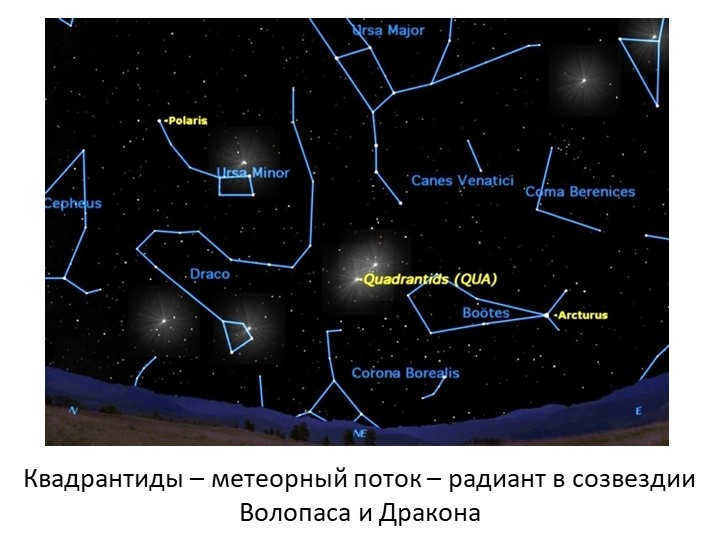
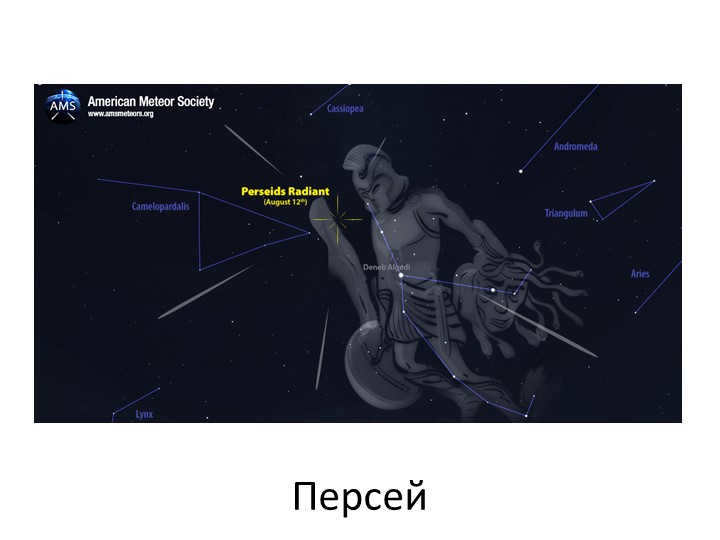
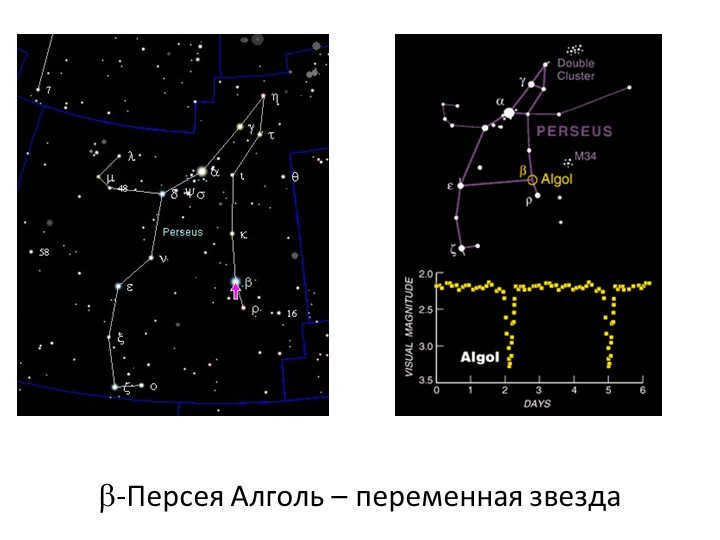
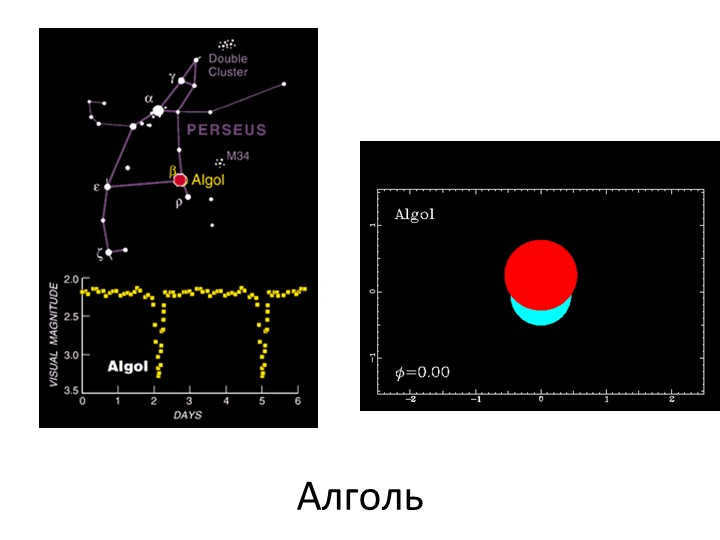
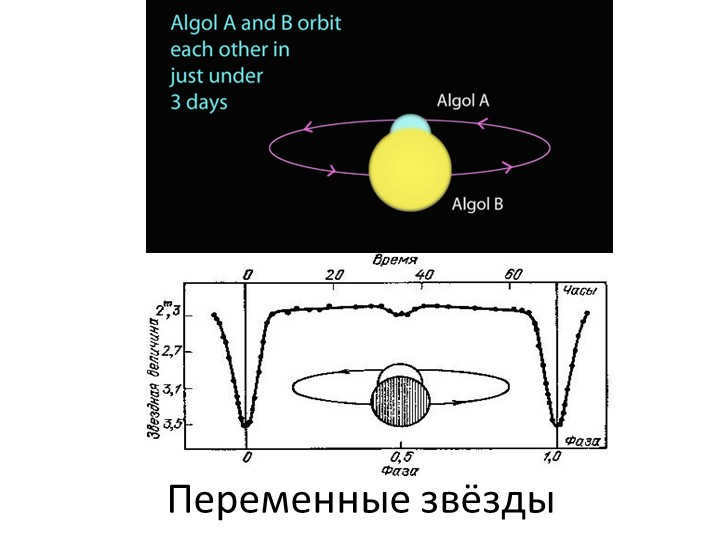
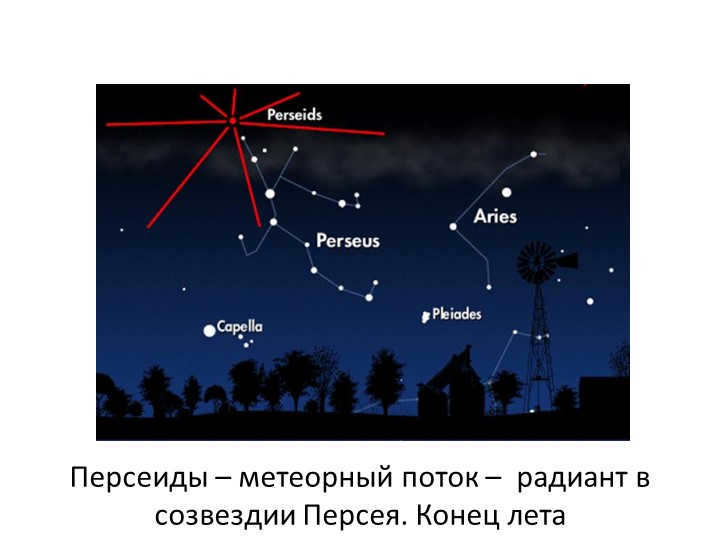
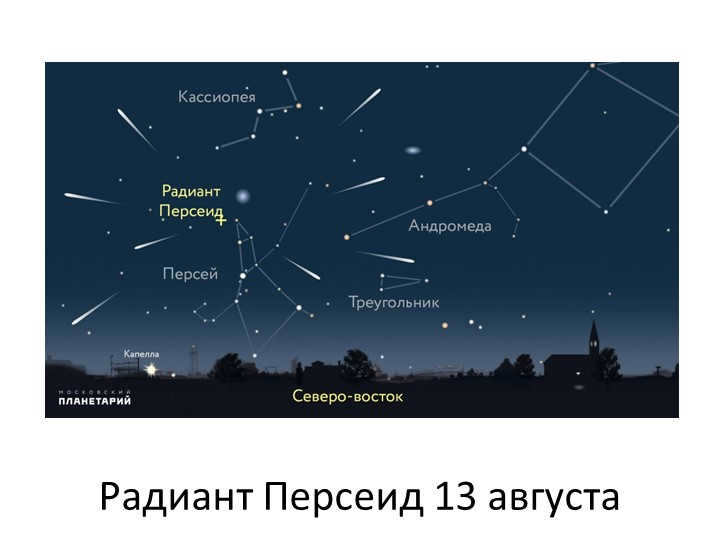
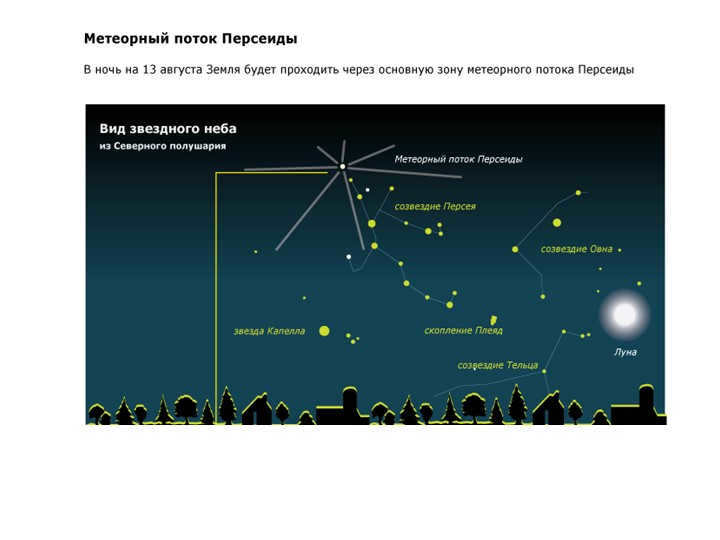
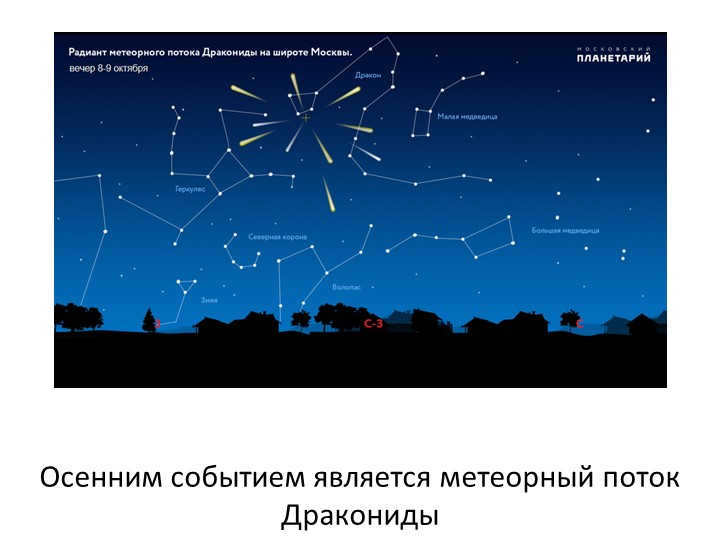
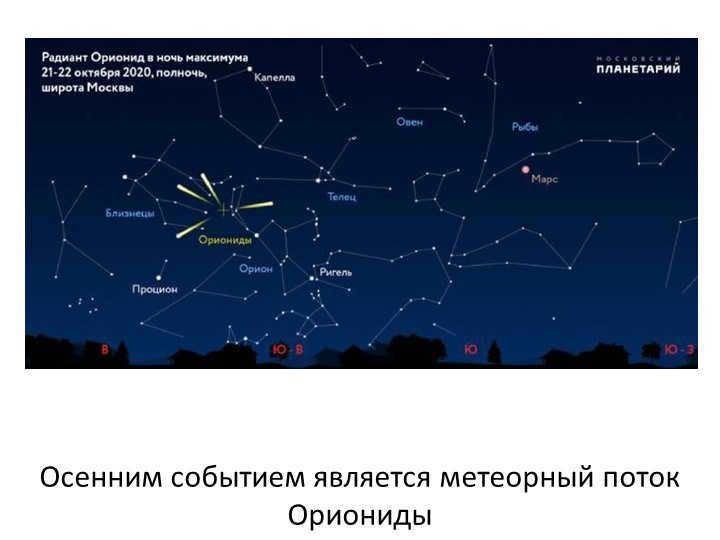

21 Slide In Messier’s catalog of French astronomer, objects are identified by the literal M+# of the object, like M45 represents the Pleiades; M1 represents the Crab Nebula.
In the recent NGC catalog, objects are identified by a number, for example, 1952 represents the Crab Nebula.
There is a dual identification as a fraction: in the numerator M1, in the denominator 1952 M1
1952 represents the Crab Nebula.
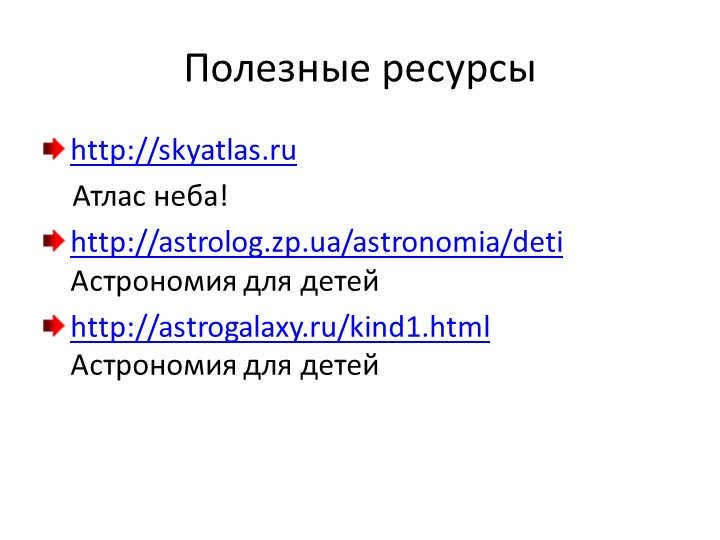
Slide 22 Helpful Links
http://skyatlas.ru
Sky Atlas!
http://astrolog.zp.ua/astronomia/deti Astronomy for Kids
http://astrogalaxy.ru/kind1.html Astronomy for Kids


Avtaikin G.A. is the author of this content.
Avtaikin G.A.’s website can be found at https://infourok.ru/user/avtaykin-genrih-aleksandrovich.
The website also features presentations on the following topics:
“Zodiacal constellations”
“Near-polar constellations”
“Constellations. Winter Sky.”
“Constellations. Spring sky.”
“Constellations. Summer sky.”
- Certificates can be obtained for your portfolio
- Eternal access is available for 99 rubles
- There are over 3,800 video lectures for everyone to watch

Online courses tailored for educators
Evgeny Yamburg Pavel Severinets
Revolutionary ideas for the upcoming academic year 2023
Exclusive workshop for instructors and school administrators
Locate resources for any lesson by specifying your subject (category), grade level, textbook, and topic:
Discover over 6,331,174 materials in our extensive database
- Textbook: “Algebra”, A.G. Merzlyak, V.B. Polonsky, M.S. Yakir.
- Topic: § 14. Mathematical modeling
You might find these courses interesting:
- Professional development course “Organization of students’ research work in accordance with the requirements of FSES”
- Professional Retraining Course “Excursion Management: Basics of Excursion Activity Organization”
- Advanced training course “Economics and Law: Taxes and Taxation”
- Advanced training course “Insurance and actuarial calculations”
- Advanced training course “Basics of management in tourism”
- Advanced training course “Psychodynamic approach in counseling”
- Refresher course “Effective secretary management with English language skills”
- Advanced training course “Emerging trends in banking activity”
- Professional retraining course “Managing transport services in the tourism industry”
- Professional retraining course “Efficient organization of insurance (reinsurance) procedures”
- Professional Retraining Course “Enhancing Quality Management”
Drop a comment
If you suspect that the content infringes copyright or should be taken down from the website for any other reason, you can submit a complaint regarding the content. Remove content
Author of the content
- On the website: 8 years and 8 months
- Followers: 12
- Total views: 155008
- Total content: 109
Online Courses for Educators
Duration: 66 minutes
Video lecture: Chat-bot for Teachers – Turning Learning into a Fun Game
Duration: 48 minutes
Duration: 86 minutes
The responsibility for resolving any disputes regarding the material and content posted on the site lies with the users who originally uploaded the material. However, the site administration is fully committed to providing support in addressing any issues related to the site’s operation and content. If you come across any unauthorized use of materials on this site, please notify the administration via the feedback form.
All materials published on this site are either created by the site’s authors or contributed by the site’s users, and are intended for informational purposes only. The copyrights for these materials belong to their respective legal authors. Any partial or full reproduction of the site’s materials without written permission from the site administration is strictly prohibited. Please note that the views expressed by the administration may not necessarily align with those of the authors.
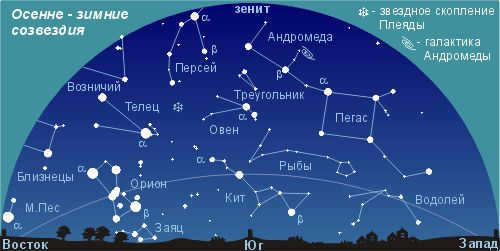
In September, the night sky is adorned with the magnificent Summer-Fall Triangle. The constellation Virgo gracefully guides the Sun’s journey, and on September 22, as we pass the autumnal equinox, the Sun transitions into Libra. As the celestial stage transforms, a new cast of constellations takes center stage, including notable ones like Capricorn, Dolphin, and Microscope.
The constellations of the fall sky encompass the months of September, October, and November.
Eagle
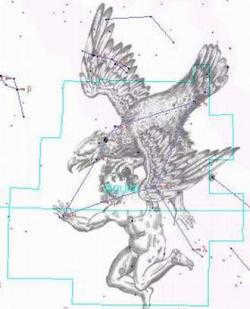
This particular constellation is classified as one of the equatorial constellations and can be found in the eastern portion of the Milky Way. It encompasses a rather expansive area, spanning approximately 652 square degrees, and is home to over 80 distinct stars.
The presence of the Eagle constellation can be observed throughout various regions of Russia, however, it is most prominently visible in the southern parts. Locating it is quite straightforward, especially when utilizing the neighboring Arrow as a point of reference. Moving towards the south, one will encounter three bright stars that are aligned in a linear fashion. This particular group of stars is referred to as the Scale Barrel, which is a prominent asterism within the Eagle constellation. Positioned right at its center is Altair, one of the most brilliant stars within our night sky.
To the south of Altair lies a pulsating variable star that belongs to the category of classic Cepheids. There are three more of these stars in this constellation, all of which can be clearly seen without the need for any optical aids.
Located as the third star in the constellation of the Scale Coromas is Tarazed, a binary star system where the main star is an orange giant.
Astronomers have observed two instances of new stars being born in this constellation within the past 2,000 years. One of them is said to be the most luminous star known to us.
Capricorn
Capricorn is an astrological sign represented by the symbol of a goat. People born between December 22 and January 19 are considered to be Capricorns. Capricorns are known for being ambitious, practical, and disciplined. They are often seen as hardworking and responsible individuals who are dedicated to achieving their goals. Capricorns are also known for their patience and determination. They are not easily discouraged and are willing to put in the necessary effort to succeed. Overall, Capricorns are seen as reliable and trustworthy individuals who can be counted on to get the job done.
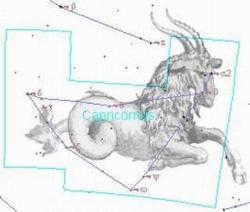
Capricorn is a constellation that can be seen best in the summer in the southern and central regions of Russia. It is located in the southern hemisphere and is one of the larger constellations, covering an area of 414 square degrees. It is the 40th brightest constellation.
The shape of Capricorn resembles two triangles connected by a single point. To locate it in the sky, you can use the constellation of Eagle as a guide. Start at the star Altair and draw a line towards the northwest – this will lead you to Capricorn. Aquarius will be to the west and Sagittarius to the east.
The brightest star in Capricorn is known as Beta star or Deneb Algiedi. It has a brightness of three star magnitudes.
Alpha Capricorn is unique and fascinating because its two components are completely independent and move separately from each other.
Within the constellation, there are several meteor streams that are collectively known as Capricornidae.
Among the distant celestial objects, there is a dense globular cluster that was discovered in 1764. However, it can only be observed using a powerful telescope.
One of the most intriguing facts about the Capricorn constellation is that astronomers identified the planet Neptune within its boundaries in 1846.
Swan
A swan is a large water bird that is known for its graceful beauty. It is native to many parts of the world and is often found in lakes, rivers, and ponds. The swan is characterized by its long neck, elegant plumage, and distinctive curved beak.
Swans are known for their strong pair bonds and are often seen swimming together in pairs or small groups. They are also known for their aggressive behavior, especially when defending their nests or territories. Despite their size and strength, swans are herbivorous and primarily feed on aquatic plants and grasses.
Swans are often associated with love and romance, and they have been featured in many works of literature and art throughout history. They are also a popular subject for photographers and nature enthusiasts.
Overall, swans are a fascinating and beautiful species that continue to captivate and inspire people around the world.
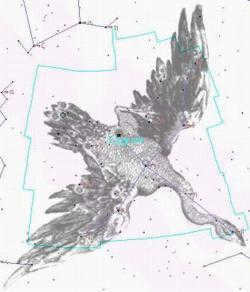
The Swan constellation is one of the most stunning constellations found in the northern hemisphere. It covers a vast area of 804 square degrees and holds the 16th position in terms of magnitude.
With its distinct pattern, the Swan constellation is easily identifiable in the night sky. Its brightest stars form two perpendicular lines, creating the well-known Northern Cross. Stretching along the Milky Way, the Swan constellation is accompanied by the Dragon constellation on the right and Pegasus on the left.
Russia offers the opportunity to observe the Swan constellation throughout the year, but the best time to do so is at the end of summer. This constellation is partially non-setting, ensuring that its brightest star, Deneb, is always visible and never hidden behind the horizon.
Within the Swan constellation, there are several notable objects of interest:
- Deneb, the Alpha star of the Swan constellation, is a white supergiant that shines 67,000 times brighter than the Sun. It is one of the prominent stars in the Summer-Fall Triangle.
- The Beta star of the Swan constellation is known as Albireo. It is a binary star system consisting of an orange giant and a blue companion star.
- Another notable star in the Swan constellation is the 61 Swan star, which is composed of two orange dwarfs.
Among the deep space objects in the Swan constellation, several nebulae deserve special mention, including the Flickering Nebula, the Witch’s Broom, and the Veil Nebula. Additionally, the Fireworks Galaxy is noteworthy for having witnessed 9 supernova explosions simultaneously.
Intelligent Marine Mammal – Dolphin
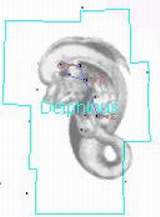
Dolphin is a small constellation located in the northern hemisphere. It covers an area of 189 square degrees and contains approximately 30 distinct stars.
This constellation can be easily observed throughout Russia. Its shape resembles that of a kite, making it easy to identify in the night sky. The Autumn-Summer Triangle can be used as a reference point to locate Dolphin.
Unlike other constellations, Dolphin does not have any first magnitude stars. However, the four brightest stars in the constellation form a diamond-shaped pattern known as Job’s Coffin. The Alpha and Beta stars are part of this pattern.
- Alpha Delphinus, also known as Sualokin, has a magnitude of 4 and is located 240 light years away from Earth.
- The name Rotanev has been assigned to Beta Delphinus. It is significantly brighter than Alpha and is located much closer to Earth, at a distance of only 97 light years.
- In 2013, a new star emerged in the Dolphin constellation, which was named New Dolphin. Additionally, there are over 300 variable stars in Dolphin.
Among the celestial objects in the far reaches of space, Dolphin contains several planetary nebulae and globular clusters that can be observed.
The Tiny Horse
The Tiny Horse is a small constellation that covers only 72 square degrees of space. In terms of size, it is considered to be one of the smallest constellations. However, despite its size, it contains 14 stars that can be seen without the need for a telescope.
The Tiny Horse can be observed from anywhere in Russia, and the best time to view it is during the late summer and early fall.
The shape of the constellation resembles an irregular quadrilateral. To locate it in the sky, you can use the constellation Dolphin as a reference point. From there, shift your gaze westward towards Aquarius. The Tiny Horse will be located at an equal distance from these two neighboring constellations.
The Farsauval is the official name for the Delta of the Lesser Horse, which is also a binary star system and the second most luminous in its constellation.
However, the most intriguing star in the Lesser Horse constellation is Gamma, as it possesses an extraordinary chemical composition.
Indian
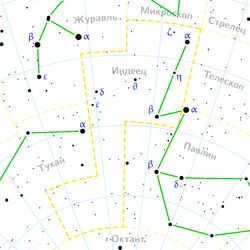
This constellation is located in the southern hemisphere and covers an area of 294 square degrees. It is not very prominent in our sky, as only about thirty-six stars can be seen with the naked eye. It is considered one of the least impressive constellations.
The shape of the constellation resembles a triangle and can be found to the north of the Peacock constellation. It is surrounded by brighter neighboring constellations such as the Microscope, Crane, Toucan, and Sagittarius. The Indian constellation is not visible from Russia, although the northern peak can sometimes be seen on clear summer nights in the mountains of Dagestan.
The brightest star in the Indian constellation is Alpha Indian, which is an orange giant located 100 light-years away from Earth.
Beta, a member of the constellation, is also classified as a giant star. However, these two stars have a brightness level of only 5 magnitudes.
When observing deep space objects, the Indian sky offers the opportunity to see three galaxies simultaneously. Among them, one has an irregular shape, while the other is a spiral galaxy with a junction.
Microscope
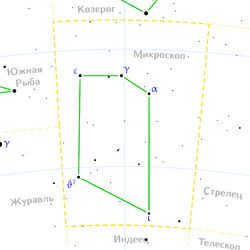
The southern hemisphere boasts one of the most fascinating constellations, the Microscope. Measuring only 210 square degrees, this constellation is relatively small. However, within this limited space, more than 60 stars can be distinguished as part of the Microscope constellation.
The Microscope constellation takes the shape of an elongated pentagon and can be found by looking towards the sky between the Sagittarius and Capricorn constellations. To the west of the Microscope is the Crane constellation, while to the east lies South Pisces.
Discovered in 1754, the Microscope constellation is relatively new. Credit for its discovery goes to the astronomer N. Lacaille.
Regrettably, there are no celestial entities within this constellation visible to observers.
Peacock

This vast and exquisite constellation, situated in the southern hemisphere, spans across an expansive area of 378 square degrees. During a clear night, one can discern over 70 stars with the naked eye.
The configuration of the constellation bears a resemblance to the numeral 8. It is positioned north of the Sacristy and Octanthus. However, it is not visible within the borders of Russia. Only in the southernmost regions is it partially visible, primarily during the summer.
Among these stars, the most radiant is Alpha Peacock, which boasts a second star magnitude. It possesses its own distinct appellation, Peacock, and exhibits a dual spectral structure.
The Delta star in the Peacock constellation is the second brightest. It is currently a subgiant, but it is expected to evolve into a red giant in the near future. Peacock Delta bears a strong resemblance to our Sun, although it is at a more advanced stage of development.
Within the constellation, there is a visible globular cluster that can be observed without the need for a telescope due to its brightness. Additionally, the most captivating object in the constellation is a galaxy that serves as a mirror image of our own Milky Way.
The Arrow
The Arrow is a well-known symbol that represents speed, direction, and precision. It is often used to convey the idea of moving forward and achieving goals. The Arrow can also symbolize protection and defense, as it is a weapon used for hunting and warfare. Additionally, the Arrow can be seen as a sign of progress and growth, as it is constantly moving forward and never looking back. Overall, the Arrow is a powerful symbol that carries a multitude of meanings and interpretations.

The Arrow is a small constellation in the northern hemisphere that covers an area of only 80 square degrees, making it one of the smallest constellations in the sky. Despite its small size, it contains approximately 28 discernible stars.
The constellation is shaped like an arrow, with four bright stars clearly marking its path. It stretches between the constellations of the dolphin and the chanterelle, running almost parallel to them. Altair stands guard to the south of the Arrow.
At the tip of the Arrow, there is a shining star called Gamma. This red giant is 640 times larger than the Sun.
A bit further south, there is a double star known as Arrow Delta. It consists of an orange giant and a white dwarf and has a magnitude of 5. It is located 450 light years away.
Sham is the unique name given to Alpha Arrow, the lone star in the constellation. It shines brightly as a yellow giant with a stellar magnitude of 5.
Within the Arrow constellation, there are two notable star clusters among the Messier objects.
Foxy

The Fox constellation is a rather large but faint constellation located in the northern hemisphere. It covers an area of 286 square degrees and contains over 70 stars that can be seen without the need for optical instruments.
This constellation is visible throughout Russia and can be identified by the Lyra constellation. By drawing an imaginary line from Vega to the Delphinus constellation, one can find the Fox constellation approximately in the middle. Its shape resembles a broken line.
The Fox constellation does not contain any stars of the first magnitude. The brightest star in this constellation is Alpha, also known as Anser. It is a red giant located 296 light-years away from Earth.
The constellation has a rich history, with its most intriguing events dating back to 1967. It was during this time that scientists made their first discoveries of pulsars within this constellation. Since then, astronomers have continued to uncover more pulsars in this area of the sky.
Among the many celestial objects in the constellation, two stand out in particular: the Dumbbell Nebula and the Hanger star cluster. These objects from distant space captivate the attention of astronomers and stargazers alike.

October is the midpoint of autumn. During this period, the autumn constellations are prominently displayed in the night sky. Among the seven constellations visible in October, Aquarius and Pegasus stand out as the most remarkable. However, the Crane, the Lizard, and the Southern Fish also contain numerous intriguing celestial objects.
Constellations of the autumn skySeptember October November
Aquarius
Aquarius is the eleventh astrological sign in the zodiac. People born under this sign are known for their independent and eccentric nature. They are often described as free-spirited and innovative individuals. Aquarians value their freedom and are not afraid to go against the grain. They are often ahead of their time and have a unique perspective on life. Aquarians are also known for their humanitarian nature and their desire to make the world a better place. They are often involved in social causes and are passionate about helping others. Despite their independent nature, Aquarians are also known for their ability to connect with others on a deep emotional level. They are often seen as great listeners and are always there for their loved ones. Overall, Aquarians are unique individuals who march to the beat of their own drum and have a strong desire to make a positive impact on the world.
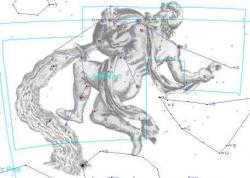
Aquarius is a massive constellation located in the southern hemisphere and is part of the zodiacal circle. Covering a vast area of 980 square degrees, this constellation is home to more than 90 stars that can be identified as belonging to Aquarius.
During late summer and early fall, Aquarius can be observed in the central and southern regions of Russia. It stretches out in the shape of a large, broken line between the constellations Capricorn and Pisces. Surrounding Aquarius are other aquatic constellations such as Whale, Dolphin, and Eridanus, earning this section of the sky the nickname “the sea.”
However, out of the vast number of stars in the constellation, only seven have a stellar magnitude higher than 4. A group of five stars in particular forms a pattern known as the Jug. Interestingly, this arrangement resembles an inverted letter Y.
The most luminous star in Aquarius is Beta, also known as Sadalsuud. This massive star is 2200 times brighter than the Sun, despite having a similar surface temperature. It is located approximately 600 light years away from Earth and is actually a triple star system.
Another prominent star in Aquarius is Alpha, or Sadalmelik. Its name translates to “lucky star of the king.” This star is a massive yellow supergiant, slightly cooler than the Sun but significantly brighter, shining nearly three thousand times more intensely.
Additionally, Aquarius is home to several interesting celestial phenomena, including five meteor streams collectively referred to as the Aquarids. There is also a red dwarf star within Aquarius that is known to have four exoplanets orbiting around it.
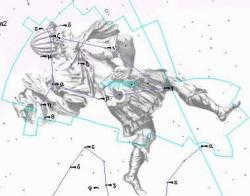
Cepheus is a massive constellation located in the northern hemisphere, covering a vast area of 588 square degrees. Within this expansive region, nearly 150 stars of the constellation can be easily discerned with the naked eye.
Situated near the pole, Cepheus unfortunately remains invisible to residents of the southern hemisphere. However, those residing within the territory of Russia have the privilege of observing this constellation throughout the entire year. To locate Cepheus in the night sky, one must simply focus their attention on Polaris. By mentally drawing an imaginary line from Polaris to the constellation known as the Lizard, Cepheus will be found along this pathway.
The constellation itself takes on the shape of an irregular pentagon. It can be further visualized by picturing a house as it is often drawn by children: a quadrilateral base with a triangular roof. If you were to flip this image, the outline of Cepheus would be revealed.
However, this particular constellation lacks the most brilliant stars. The primary star of Cepheus goes by the name Aldemarin and possesses a magnitude of 3. It is located a mere 49 light years away. Astronomers speculate that in the future, Aldemarin will replace Polaris as the dominant star.
Delta Cepheus, also known as Aldarid, is a typical binary star and serves as the archetype for an entire class of cepheids.
Nevertheless, the most captivating star within this constellation is Mu Cepheus, a red supergiant with an intense radiation output that is 350,000 times more powerful than that of the Sun. From August to January, this crimson star can be distinctly observed in the night sky.
It would be remiss not to mention VV Cepheus, a red hypergiant. This star ranks as the second largest in our celestial sphere and is only slightly smaller than the behemoth star in the constellation of Canes Venatici.
Crane
A crane is a type of machine, generally equipped with a hoist rope, wire ropes or chains, and sheaves, that can be used both to lift and lower materials and to move them horizontally. It is mainly used for lifting heavy objects and transporting them to different locations. Cranes are commonly used in construction sites, warehouses, and shipping ports. They come in various sizes and types, including mobile cranes, tower cranes, and overhead cranes. Some cranes are operated manually, while others are controlled remotely or through computer systems.
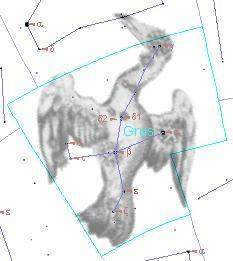
The Crane constellation is a slender and stunning group of stars found in the southern hemisphere, covering an impressive 366 square degrees. It can only be observed in the northern hemisphere if you are south of the 51st parallel.
When looking up at the night sky, it is helpful to use the constellations of South Pisces as a guide, which will be located north of the Crane constellation, and the Tucana constellation, which will be situated to the south. The Crane constellation resembles a crane, but not the bird variety – it’s more like the type of crane used to draw water from a well in a village.
Without the aid of optical instruments, you can see 53 stars within the Crane constellation. The brightest of these stars is Alnair, a red subgiant positioned 100 light years away. Alnair is relatively new in cosmic terms, as it is only 100 million years old.
Alphaulk or Gruid is the alternate name for Beta Crane. This particular star is known for its dim red luminosity, which is considered to be one of the coolest among stars in the same class.
The η Peg star system is a stunning pair of stars that shine brightly. The two components have magnitudes of 2.9 and 9.3, respectively. The distance between them measures 90.4″. Even amateur or semi-professional telescopes can easily observe the noticeable gap between these two stars.
10.2 The binary star λ Peg
λ Peg is a binary star system which is composed of a giant star of spectral class F and magnitude 4.1m, and a companion star that is fainter, with a magnitude of 9. The separation between the two stars is slightly more than 1″.

So, are you not exhausted? Now you have knowledge of the exact location to search for an abundance of diverse galaxies – within the Pegasus constellation.
Take note of NGC 7331, a galaxy that Charles Messier was unable to locate during his era. Additionally, do not overlook the globular cluster M 15.
Aries is a widely recognized constellation in the zodiacal constellations group, and it holds the 39th position out of all 88 constellations. The origin of the name of this constellation remains uncertain, although historical evidence suggests that it was described by Claudius Ptolemy.
This constellation is notably expansive, covering an area of 441.1 square degrees. Despite predominantly consisting of faint stars, over 50 stars are visible to the naked eye.
The most famous celestial bodies in the constellation of Aries
- Hamal. (This star possesses the highest luminosity and is typically situated on the face of Aries)
- Mazarthim. (The second most radiant star)
- Sheratan. (Ranking third in brightness, Sheratan was discovered in 1664 and also represents the northern horn of Aries).
In terms of its location, the constellation can be found in the Northern Hemisphere of the Earth, situated between the constellations of Pisces and Taurus.
Unique characteristics of the Aries constellation
- Official name: Aries.
- Meteor showers: Arietids, May Arietids, Epsilon-alietids.
- Adjacent constellations: Cetus, Taurus, Pisces, Perseus, Triangulum.
Origin and mythology of the Aries constellation
The Aries constellation has a rich history and is associated with various myths and legends.
- Legend has it that King Ataman and his wife Nephela were blessed with two children, Gella and Phrixus. However, the king’s infidelity led him to marry another woman named Ino. Ino, being infatuated with her stepson, relentlessly sought his attention. Phrixus, on the other hand, rejected her advances, which only fueled her anger. In a fit of rage, Ino plotted to kill Phrixus. Fortunately, his own mother came to his rescue by sending a golden Ram named Chrysomalla, who possessed the ability to fly. The Ram was tasked with saving Phrixus and his sister Gella by taking them to Colchis. Tragically, during their flight, Gella fell into the sea and perished. Overwhelmed with guilt, the Ram decided to sacrifice himself to the god Zeus. In the end, Zeus honored the Ram by elevating it to the heavens after its selfless act.
How to locate the constellation Aries
For those who are inexperienced or unfamiliar with the night sky, locating the constellation Aries can be a challenge, as it does not resemble any recognizable geometric shape.
However, there are three main stars in the constellation that can serve as a guide. These stars form a distinct arc, while the rest of the stars are scattered throughout the constellation. The best time to observe Aries is during the autumn season.
In particular, the constellation is most visible during the nights of November. Additionally, between April 19 and May 13, the Sun aligns with Aries, making it easier to spot.
Therefore, if you want to observe Aries, the ideal time to do so is in the autumn season. The constellation is especially prominent on November nights, and during the period from April 19 to May 13, the Sun illuminates Aries.
Did you know these fascinating facts about the Aries constellation?
- In Greek mythology, Aries is known as Krios, a name that shares a consonance with the word “gold”. This connection is linked to the famous legend of the golden fleece.
Interestingly, the name Krios also has a consonant similarity to the name of Christ. This is why some cultures have associated the constellation with a shepherd holding lambs in his arms.
Constellations in the autumn sky
Located in the southern part of the sky, there is a massive rectangle formation known as the Pegasus constellation. This specific arrangement of stars is often referred to as the “Great Rectangle of Pegasus”. Starting from the top left corner of this rectangle, which is known as alpha Pegasus, there is a line of stars resembling the handle of the Big Dipper. These stars represent the brightest ones in the Andromeda constellation.
Interestingly, just above these stars, you may notice a faint spot. This spot is none other than the renowned Andromeda Galaxy, M31.
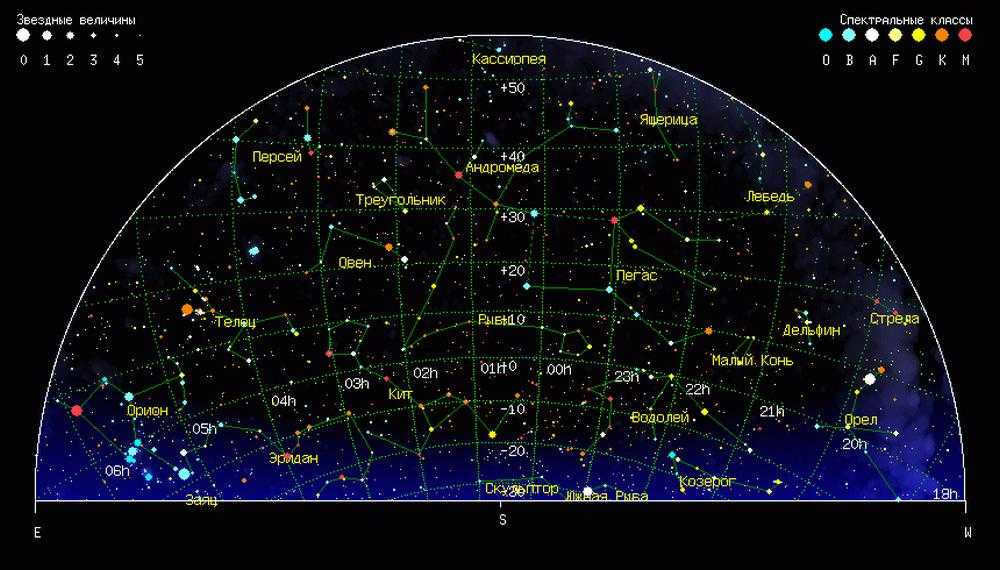
The constellations of the autumn sky in the southern part.
If we shift our gaze to the left along Andromeda, we can see the bright alpha star of Perseus. This star forms a noticeable triangle along with beta and delta.
Beneath Andromeda, we can clearly see a pair of bright stars from the Aries constellation. Between Aries and Andromeda, a small triangle of dim stars can be observed – this constellation is known as the Triangle.
Above Pegasus, above its upper right corner, there is another relatively unremarkable constellation – the Lizard.
Beneath Pegasus, to the right of Aries, lies the Pisces constellation. There are no bright stars in this area either.
The Whale is an expansive constellation that lies even further below Pisces. Nevertheless, it requires a boundless imagination to discern any semblance of this magnificent creature within a cluster of stars.
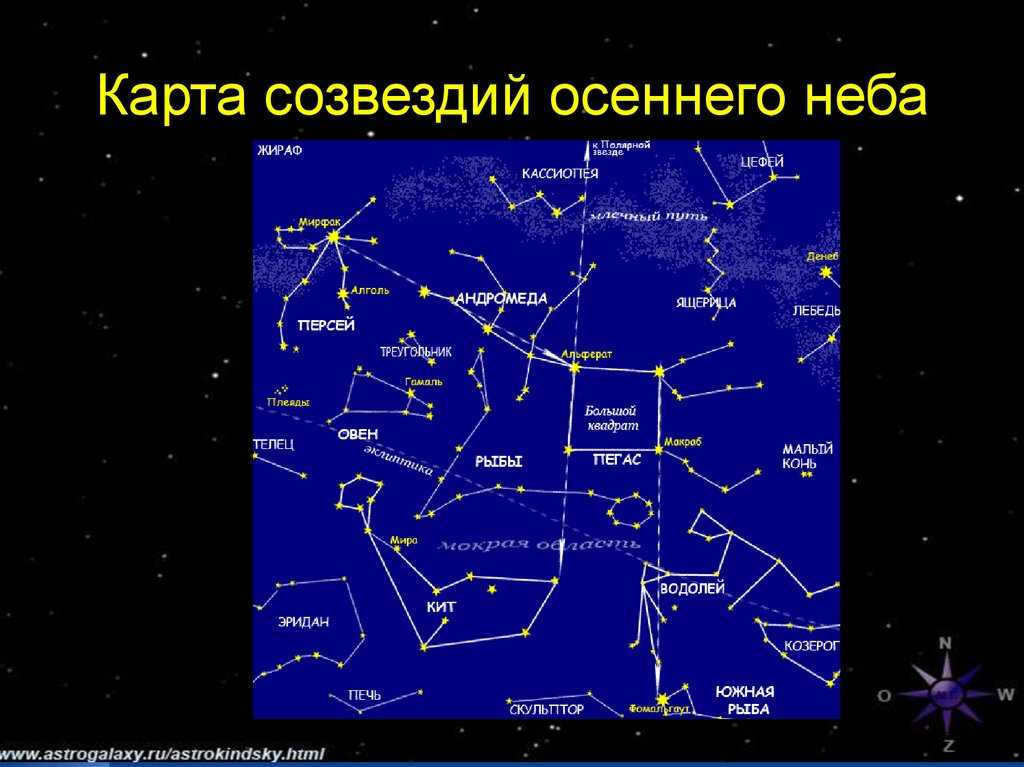
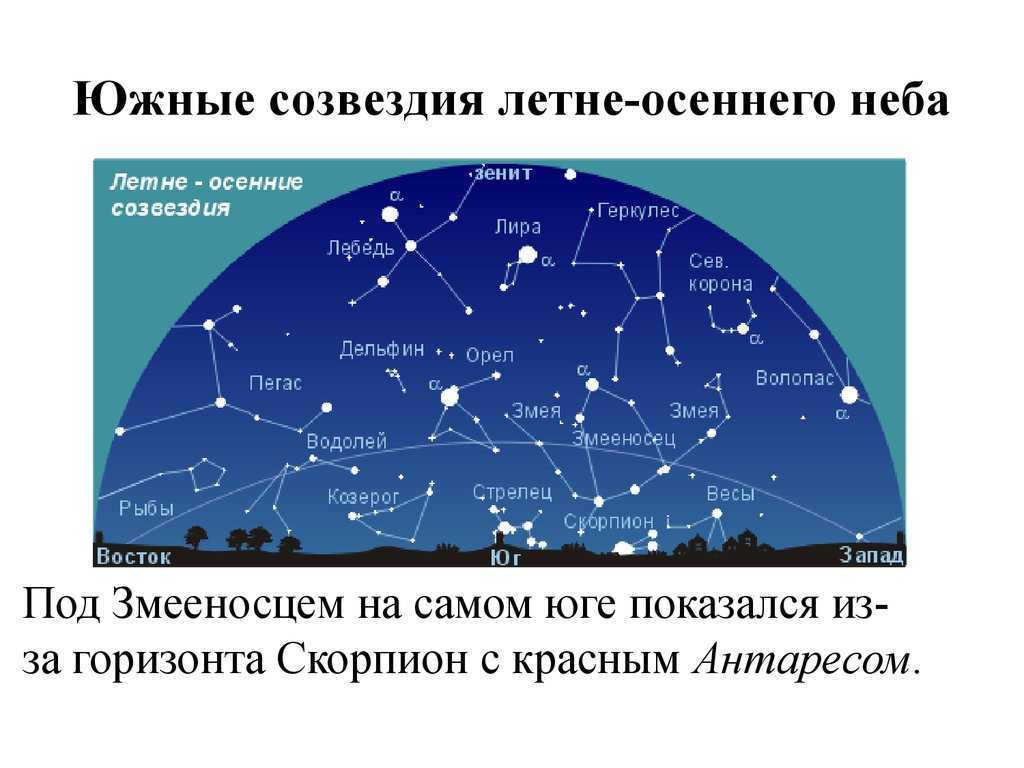
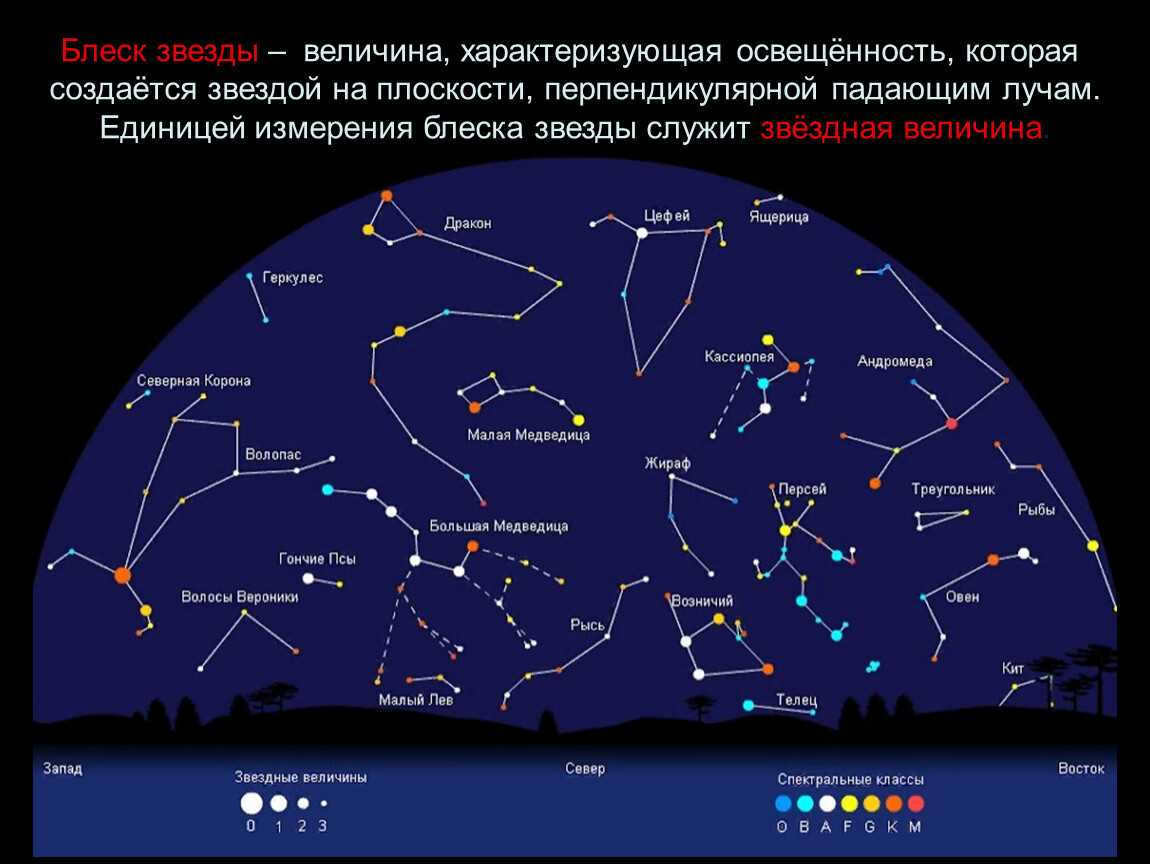
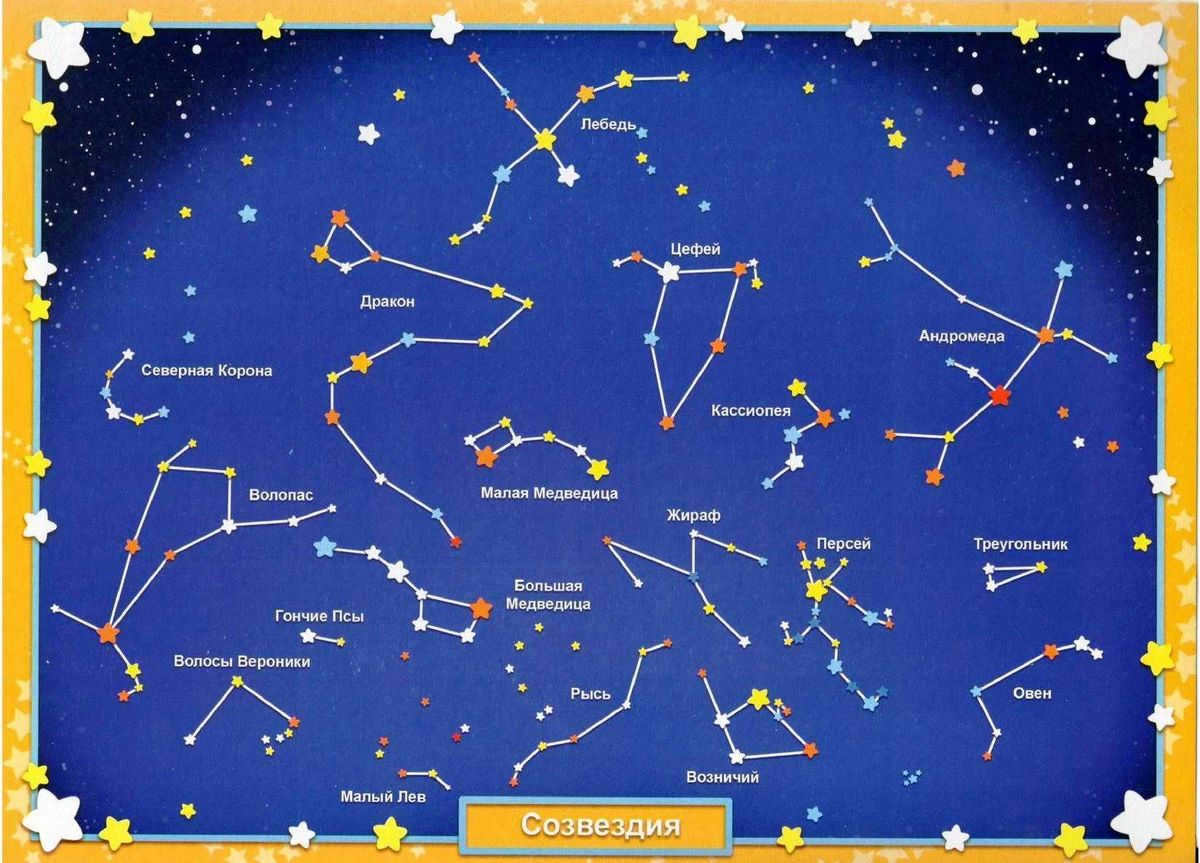

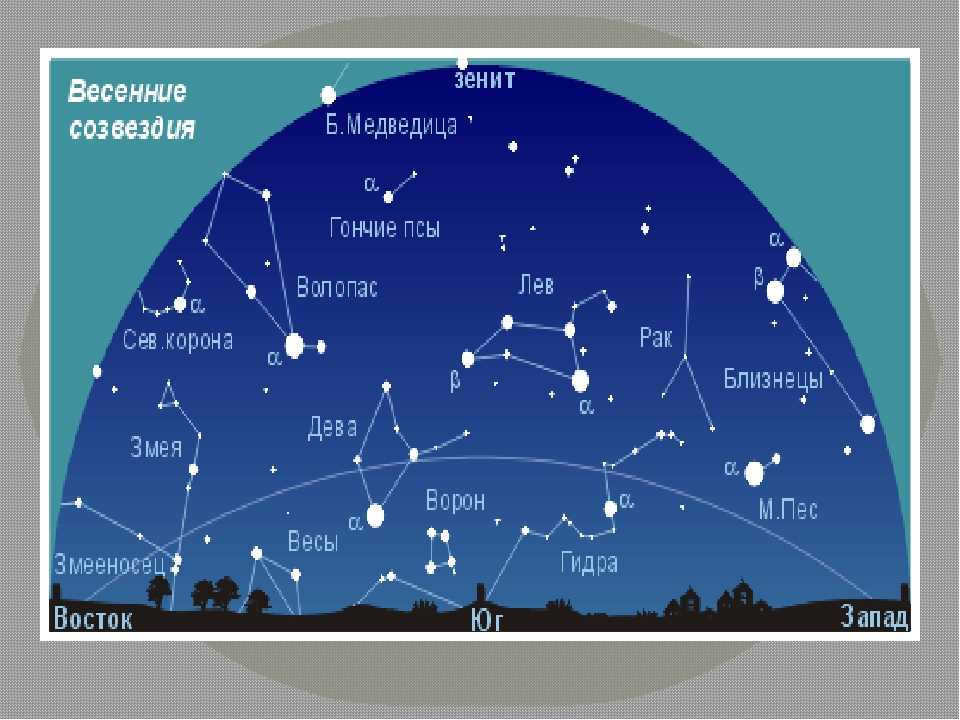
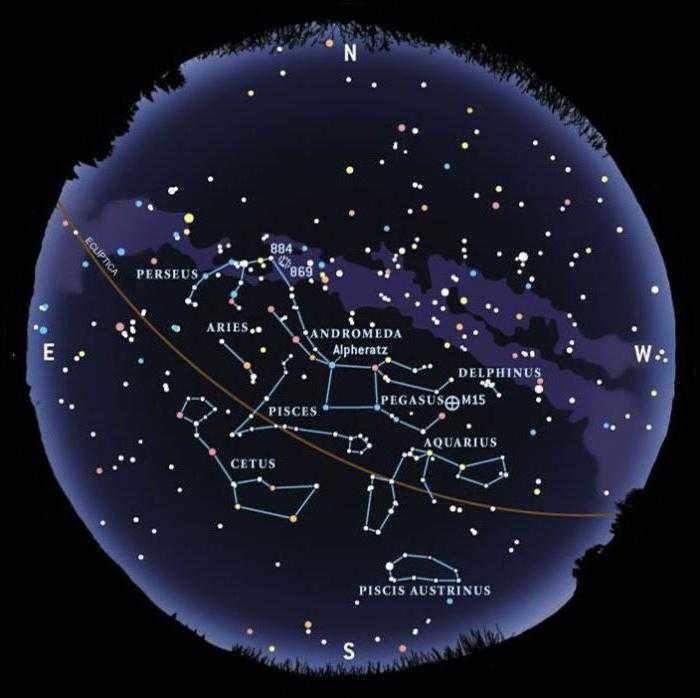
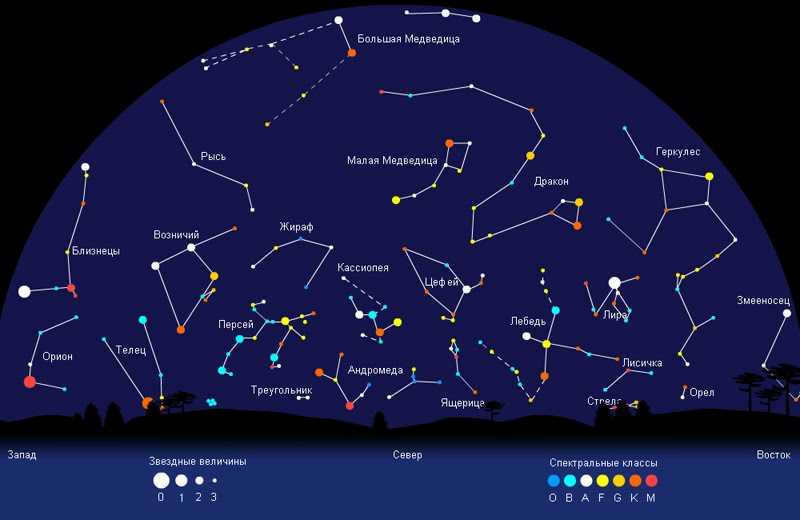
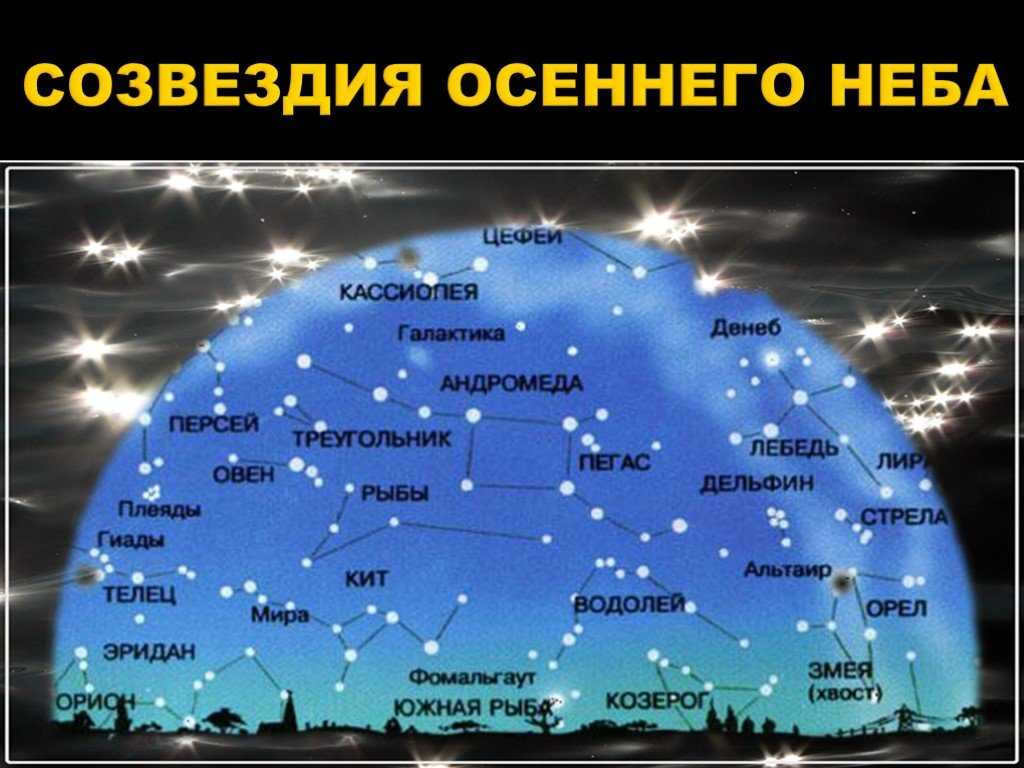
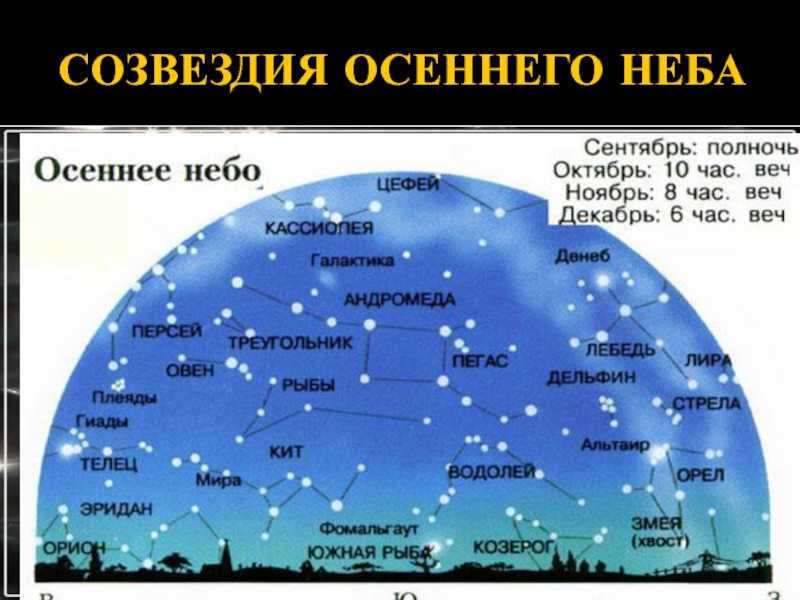
Phoenix
The Phoenix constellation is a small constellation that can be found in the southern hemisphere. It covers an area of 469 square degrees and is home to nearly 70 stars.
The shape of the constellation resembles a bird, with its elongated pentagon representing the body and the two broken lines symbolizing the wings. While it can be fully seen in the southern hemisphere, it is only visible south of the 32nd parallel in the northern hemisphere.
To locate Phoenix in the night sky, you can draw an imaginary line connecting the two brightest stars in the area: Ahernar from the Eridanus constellation and Fomalgaut from South Pisces. In between, you will find another bright star called Anka, which is the Alpha star of the Phoenix constellation.
Phoenix, discovered by P. Plancius in 1598, is a newly identified constellation. Additionally, two galaxies and a meteor stream can be observed as part of this constellation.
The Origins of Constellation Names
Constellation names can include both mythical creatures and modern designations. This is because the constellations were officially named in 1928 and those names have remained fixed.
The presence of mythical creatures and deities in the names is a direct reference to ancient Greece and Rome. These civilizations have left behind a wealth of documentary evidence, with their myths, gods, and heroes preserved in the starry sky. During that time, the night sky was not just a map of stars, but also considered the dwelling place of the gods and heroes who perished on the battlefield.
The brightest representatives of that era include the constellations of Hercules, Centaurus, Orion, Pegasus, and Cassiopeia.
Modern constellations have names that reflect modern animals and household items, such as Toucan, Chameleon, Microscope, Compass, and more.
Cassiopeia’s seafood menu
Autumn might be a harsh and wet season, but if you’re fortunate, it offers a chance to witness constellations that would be much more difficult to observe in other months.
As the summer transitions into fall in the northern hemisphere, the changing seasons bring about many transformations in the night sky. The constellations that have dominated the sky for months now begin to descend lower in the western horizon. They are replaced by the fall sky constellations Andromeda, Aquarius, Pisces, Pegasus, and others that become visible shortly after sunset. These constellations are not visible from the European part as they belong to the southern hemisphere.
Now, let’s embark on our adventure across the autumn sky, with a special focus on a few of the prominent constellations linked to this season.
The Story Behind Their Names

If you have some knowledge of ancient Greek mythology, you might recognize some familiar names in the constellations. Andromeda and Perseus are well-known characters from these myths. The Whale, Pisces, Aries, and Triangle are also ancient constellations, although the Triangle is simply a geometric shape without any special meaning. The Aries constellation was named after the animal because someone saw its figure in the sky.
However, the name Pisces has a meaning. In ancient maps, this constellation is depicted as a pair of fish tied together by their tails. According to one legend, the Sun enters this constellation in the spring, which marks the beginning of the floods. That’s why it’s called Pisces.
The constellation of Kit has a mysterious origin. It is believed that it was named after the creature that nearly devoured the beautiful Andromeda and is now immortalized in the night sky.
The Lizard constellation has an intriguing backstory. It was added to the celestial map by the Polish astronomer Hevelius in 1690. Hevelius believed that this patch of sky was so small that only a tiny lizard could fit within it, and the stars resembled the shimmering scales of a lizard.
These constellations are among the many that can be observed during the autumn and winter months. Despite their seemingly unremarkable appearances, they contain numerous fascinating celestial objects. For instance, the Andromeda constellation is home to the famous Andromeda Nebula. Even the small Triangle constellation boasts a remarkable spiral galaxy – M33, one of our neighboring galaxies.

1) What was the reason behind the scientist’s characterization of the starry sky as the Great Book of Nature? What hidden gems did he refer to?
Exploring the starry sky is akin to delving into an extraordinary narrative brimming with enigmas and revelations. By immersing oneself in this literary masterpiece, one gains a deeper understanding of the cosmos and stumbles upon countless treasures of novel insights into the natural world.
The night sky, adorned with countless stars, appears to me as a vast expanse, teeming with its own enigmatic life that eludes human comprehension. It strikes me that our planet Earth is akin to a colossal spacecraft, traversing the celestial realm much like ships navigate the open waters of the ocean.
I derive immense pleasure from gazing at the celestial canopy, as it captivates and entices, infusing my spirit with exultation.
3) Familiarize yourself with the guidelines for observing the stars. Which of these guidelines were already familiar to you and followed during your own observations, and which ones were new to you?
Constellation Lizard: Description and Location
On November 15, 2017, we learned that the constellation Lizard is relatively small and relatively new. It is observable in the night sky using a telescope, even for amateur astronomers. This constellation is composed of star clusters rather than a single galaxy.
Origin
The constellation Lizard does not have any ties to ancient mythology. Its creation can be attributed to the Polish astronomer Jan Hevelius, who decided to include a new constellation in his star atlas. This occurred in the late 17th century (1690). The arrangement of faint stars in this area resembled the shape of a lizard.
Hevelius chose to name this constellation after the lizard simply because he did not want to leave this section of the atlas empty. The only creature that could fit in this limited space was a small animal like a lizard. Interestingly, Hevelius even specified the species of the animal in his atlas, which is the mountain or ring-tailed agama.
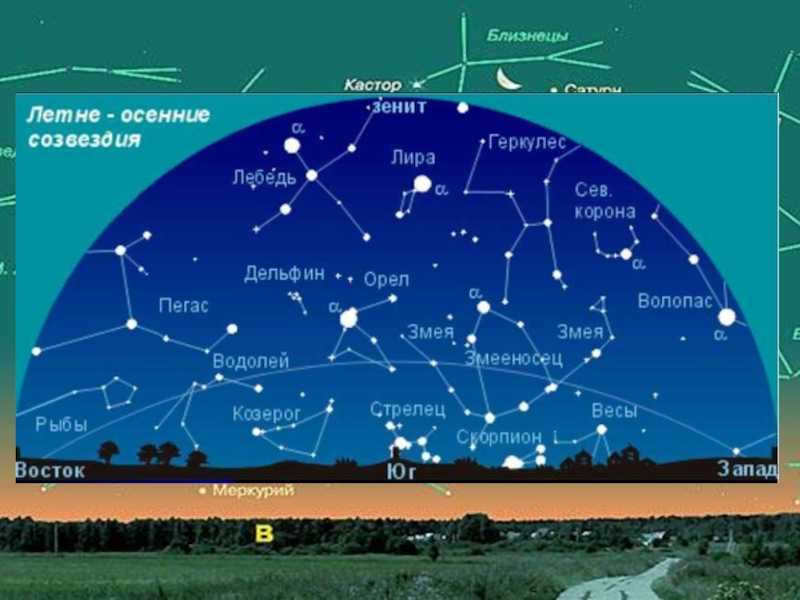
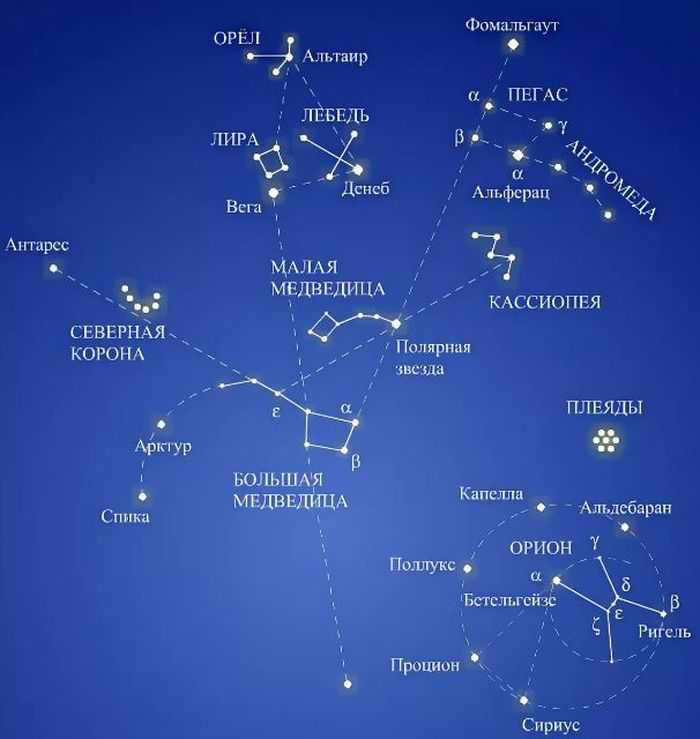
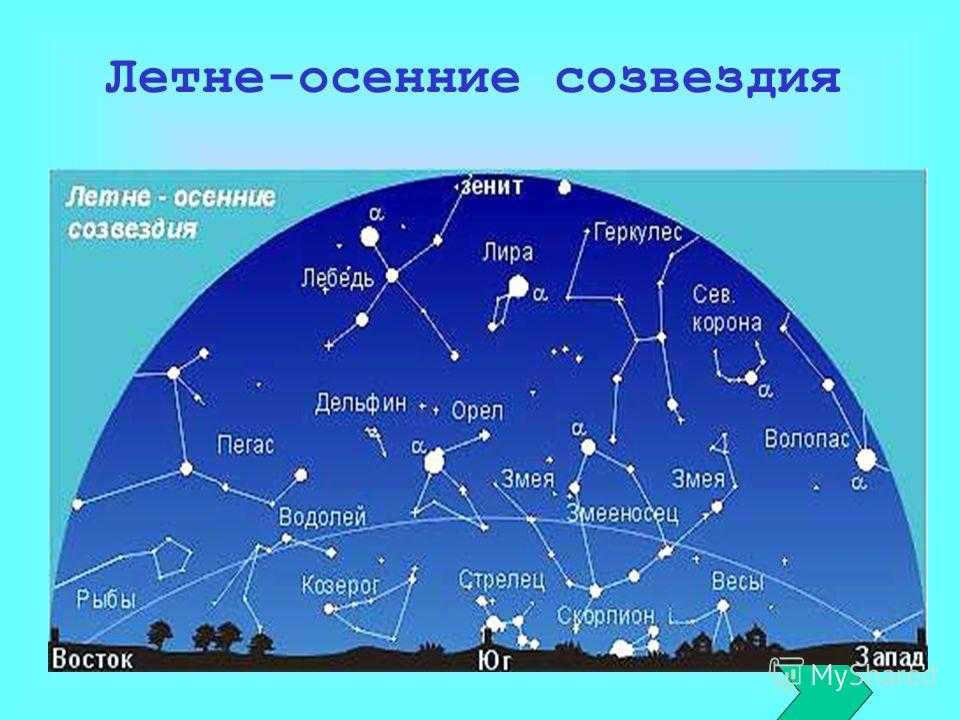
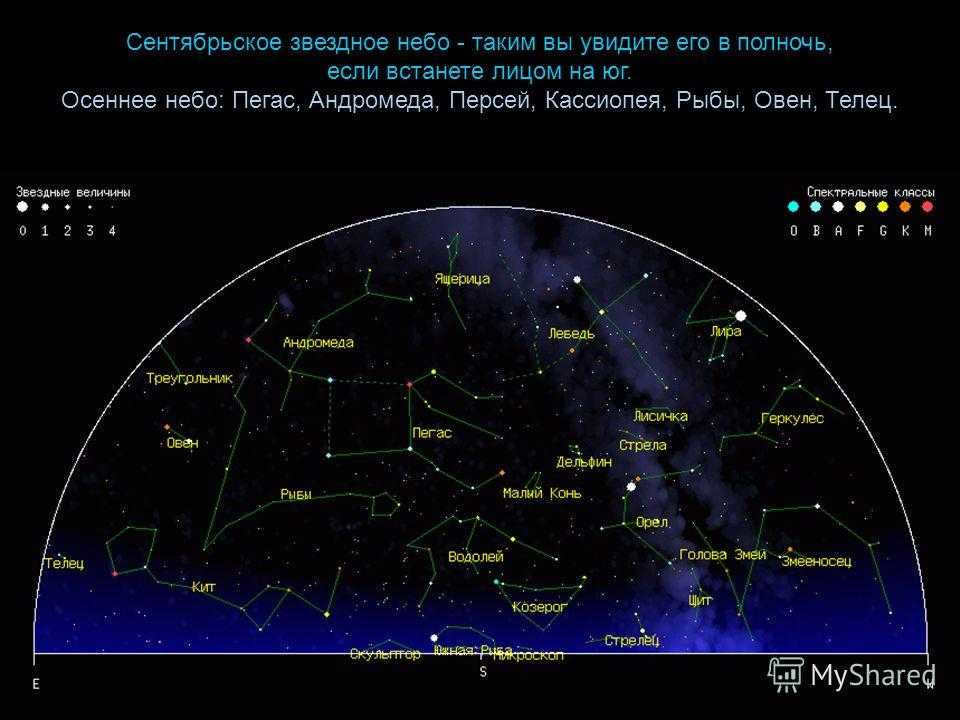
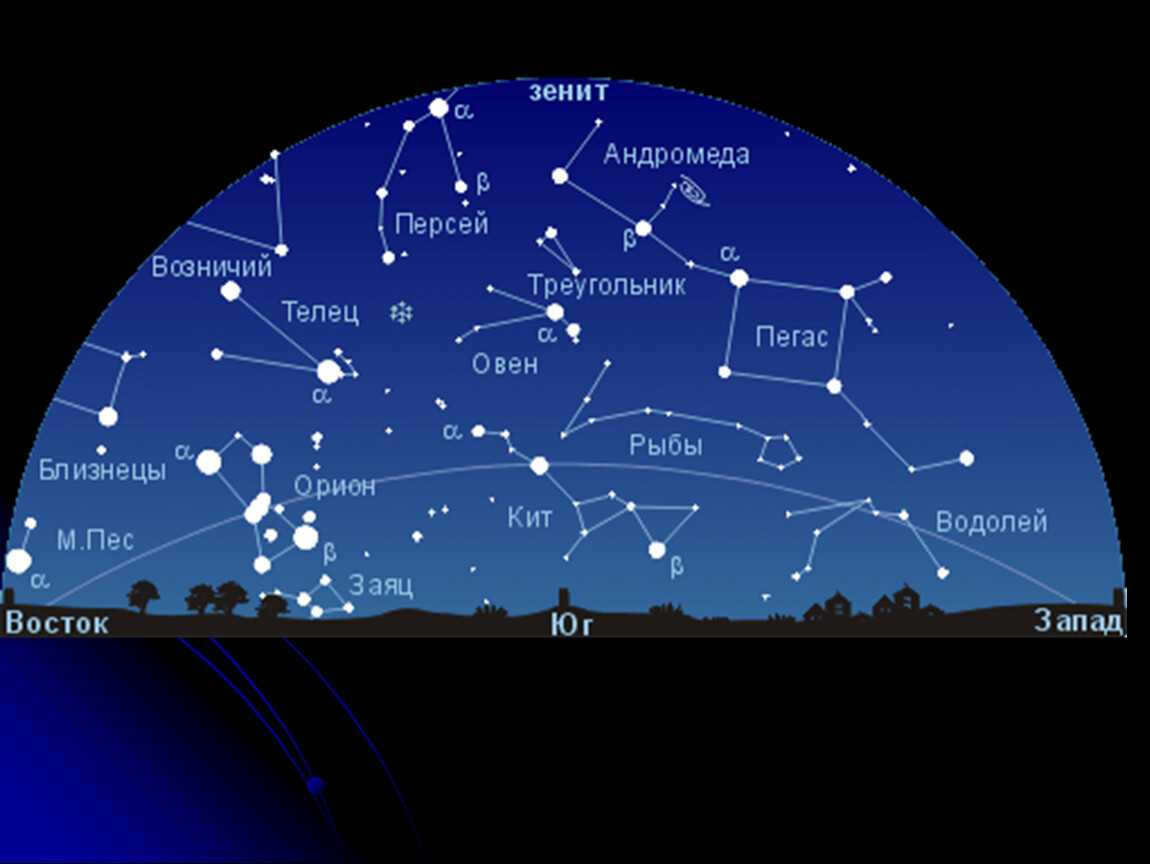
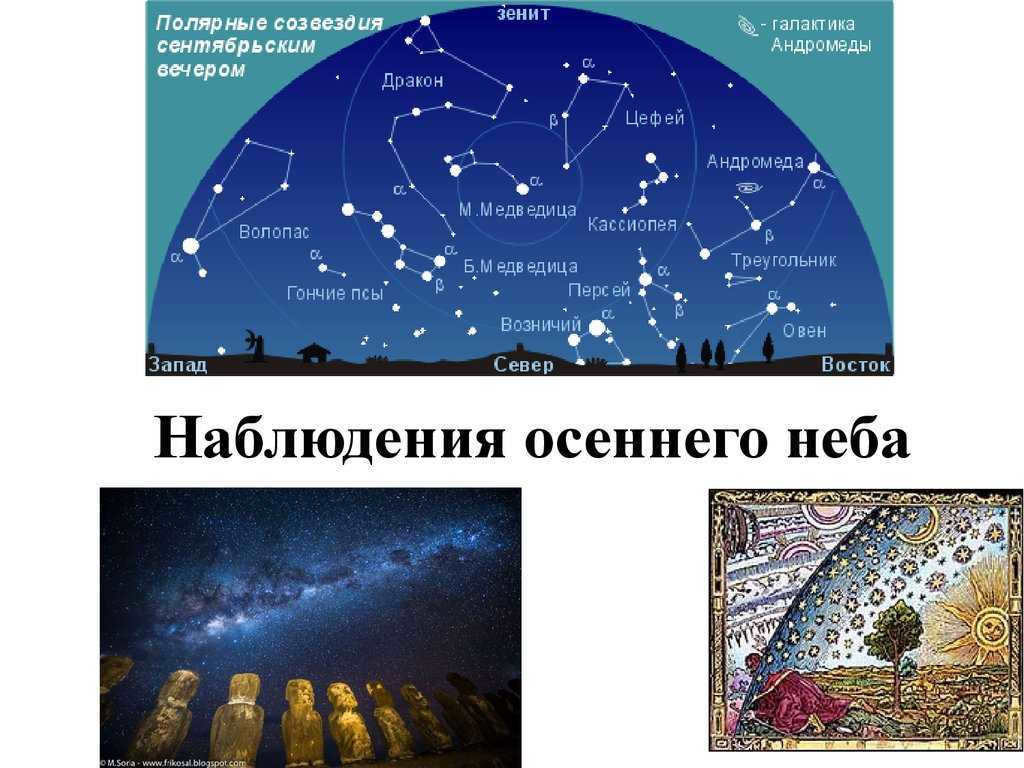
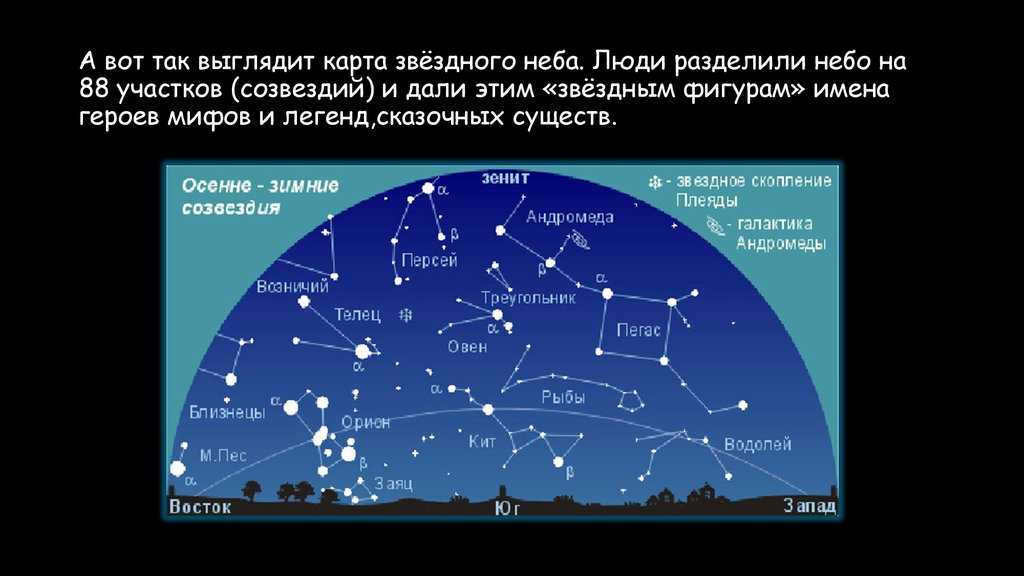
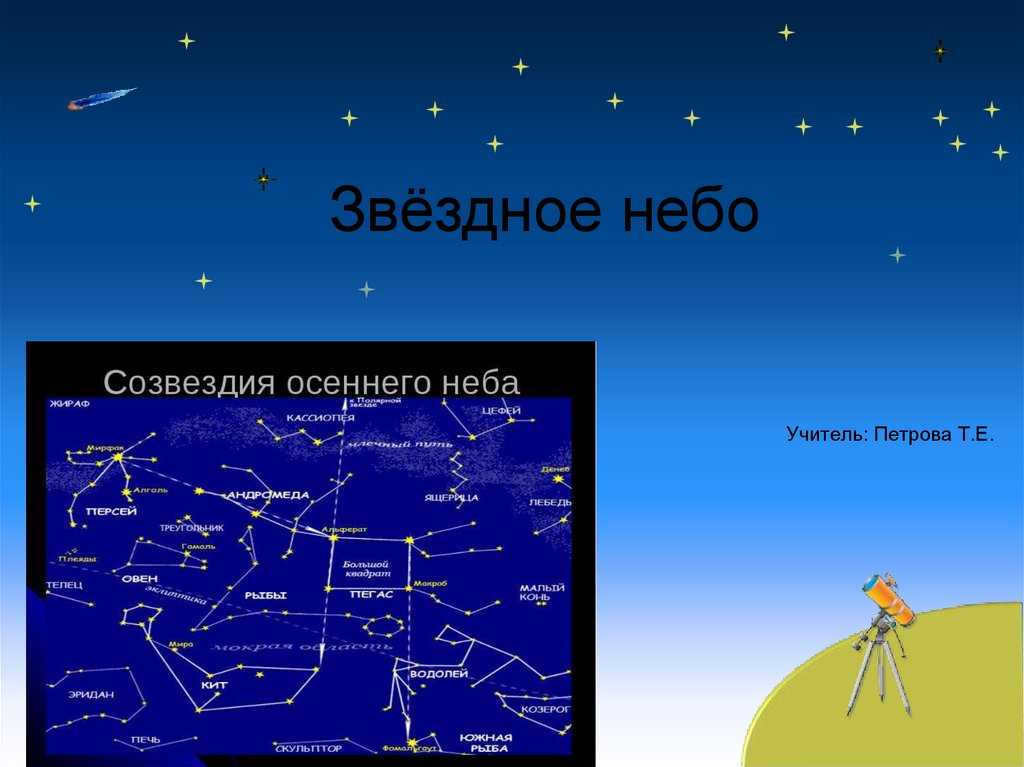
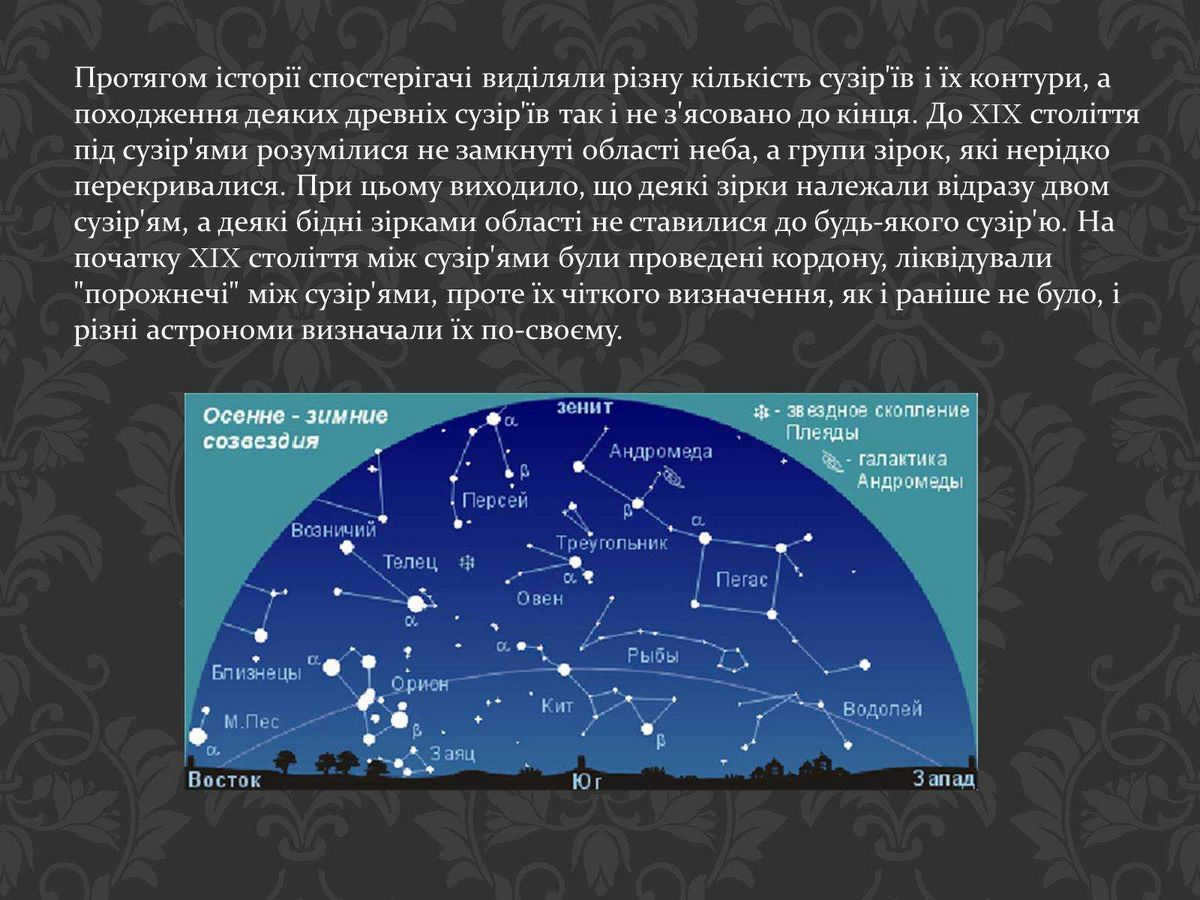
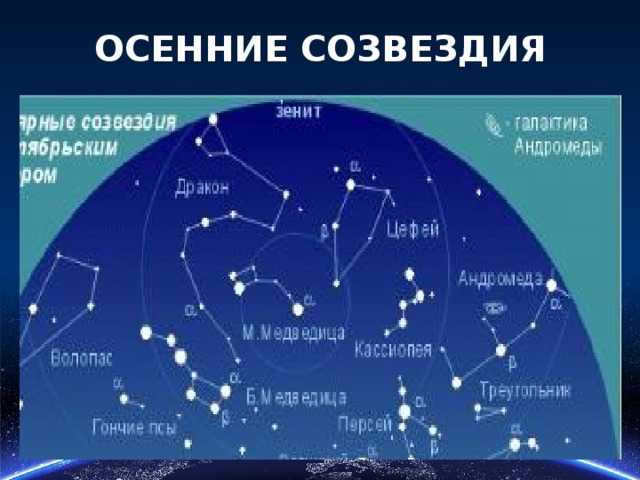
Description
The constellation Lizard is located in the northern hemisphere of the sky, positioned between the Swan and Andromeda constellations. Its closest neighbors include Cassiopeia, Pegasus, and Cepheus. While not particularly bright, the northern half of the constellation, known as the snout, extends into the Milky Way. The Lizard constellation has a shape resembling that of a snake.
The Lizard constellation is often associated with the fall sky. If you’re wondering when is the best time to observe this constellation, the answer is simple: in the month of September during the fall season. Although the constellation itself may be small and lack notable objects, it serves as an example of finding hidden beauty in the unassuming scales of a reptile.
There are only a few of them present in this location. The most peculiar one is known as the lacertidae blazar. It received this name due to its discovery in the lacertidae constellation. In 1929, the German astronomer Kuno Hoffmeister came across a celestial body that he initially believed to be a variable star.
He even assigned it a name – BL Lizard. The investigation continued, and astrophysicists eventually determined that it is not a star, but rather an active nucleus associated with large elliptical galaxies located billions of light years away.
The nucleus continuously emits extremely powerful electromagnetic radiation.
Currently, these objects are often mistaken for massive black holes. To date, there have been 50 known blazars, some of which were previously misconstrued as variable stars. The Lizard also has them:
- The Lizard’s AR is a star that exhibits noticeable variability. Its luminosity undergoes a change of 0.7 m over a period of 545 days.
- Another star in the Lizard constellation that displays variability is the Lizard’s EV. This particular star is classified as a flaring red dwarf and is estimated to be several hundred million years old. It is also the most extensively studied flaring star, with scientists conducting continuous observations over 11 consecutive nights throughout the years. During these observations, they recorded flares occurring across different wavebands. These efforts were not in vain, as in April 2008, a flare of unprecedented magnitude was observed, surpassing the power of even the strongest solar flare by a factor of 10,000. Remarkably, on the night of the 25th, this remarkable star was visible to the naked eye, without the need for a telescope.
Well-Known Entities in the Lizard Constellation
The constellation Lizard boasts several renowned celestial objects, including:
- NGC 7243, a star cluster situated in close proximity to the Alpha star of the Lizard constellation. This cluster comprises blue and white stars and is located approximately 2800 light-years away from Earth. Within scientific circles, it is also referred to as Caldwell 16.
- BL Lacertae, initially mistaken for a variable star, is, in fact, a blazar—a compact stellar object. It emits highly variable radio emissions.
While the Lizard constellation lacks galaxies, globular clusters, and meteor streams, it does contain star clusters, double stars, and a planetary nebula. Notably, a new star emerged in 1936, but its small size necessitates the use of a telescope to observe it.
Location in plain sight
An image of the Swan constellation as depicted in Johann Bayer’s renowned atlas “Uranometria” in the year 1603
The position of the faint stars can be determined by locating the luminous ones, thereby identifying the desired constellation. Throughout history, bright stars have been clustered together to facilitate the task of locating constellations. These constellations were named after animals (such as Scorpion and Great Bear), Greek mythological heroes (like Perseus and Andromeda), or ordinary objects (such as Libra, Arrow, and Northern Crown). Starting from the 18th century, certain prominent stars within each constellation were designated using letters from the Greek alphabet. Furthermore, approximately 130 exceptionally bright stars were bestowed with unique names. Over time, astronomers assigned numerical labels to these stars, which are now used to identify dim stars. Since 1922, several major constellations have been subdivided into smaller constellations, and instead of constellations being grouped together, they are now regarded as distinct sections of the celestial sphere. Currently, there are 88 individual sections of the sky referred to as constellations.
September is the ideal time of year for stargazing in the northern hemisphere. During early fall, the Milky Way is particularly impressive, stretching across the sky and passing through ten major constellations.
Heading North
At this time, the constellation Cepheus is near its zenith, making it easy to spot by looking directly up. Nearby, you can also find Cassiopeia with its cascade of Perseus stars.
The Big Dipper, accompanied by the Little Dipper, is closer to the sky. It’s easy to identify the well-known Big Dipper, with its handle pointing towards the star Arcturus like a compass arrow. Arcturus is the brightest double star in the northern hemisphere. It’s a part of the Volopassus constellation, which can be seen with the naked eye during sunset and is obscured by the horizon line. On the left side is the Northern Crown, a ring of stars that is not fully closed.
When looking towards the east at dawn, it is impossible to miss the brilliant collection of stars known as Ascendant. Among the many stars in this constellation, Capella stands out with its radiant glow. Positioned to the right of Capella is one of the brightest stars in the night sky, Aldebaran. Close by is the star cluster known as the Hyades. Just above the Hyades cluster, you can find a small group of stars that form a distinct pattern resembling a bucket. This is known as the Pleiades cluster. Finally, in the northeastern sky, you will find the sparkling stars Castor and Pollux, which belong to the Gemini constellation.
Southern direction
After the sun sets, you can see the “Square of Pegasus” in the southeast sky. It is made up of three stars from the Pegasus constellation and the star Alpheratz. To the left of it, you can see the Andromeda constellation, and below it are two constellations: Triangle and Aries. On the left side of this square, you can spot the Pisces constellation, and on the right side, there is the Aquarius constellation. In the southwest, you can see the Capricorn constellation. On the southeastern side of the sky, just below Andromeda, near the horizon, you can find the Whale constellation.
Here we conclude our brief journey through the vast expanse of the celestial sphere. We are now making our way back to the familiar confines of Earth. I trust you have had an enjoyable experience and have gained a greater understanding of the celestial bodies. Armed with this newfound knowledge, you will now have the ability to impart this wisdom to others and, more importantly, demonstrate how to locate the constellations of the northern hemisphere in the nocturnal sky. You can elucidate the intricate patterns our ancestors discerned amidst the stars and acquaint others with their names. Alternatively, you may choose to delve into the various legends associated with these constellations and regale your audience with even more captivating tales. It is truly exhilarating to acquire new knowledge, and equally delightful to share this knowledge with others. Furthermore, capturing images of these celestial wonders can be a delightful endeavor, and even your smartphone can serve as a tool for this purpose. To learn more about this fascinating subject, I encourage you to peruse the article on How to Capture Stellar Images.
And… make sure to frequently gaze up at the heavens! Not just at night, but also during daylight hours (while keeping safety in mind, of course). Because, you see, it is an incredibly simple, yet truly enchanting practice that enables you to transition from a frenzied, fast-paced existence to a state of equilibrium and mindfulness. Achieving this requires establishing a connection with your innermost being, which in turn necessitates taking a moment to unwind and detach from the mundane aspects of life. Consequently, the awe-inspiring celestial canopy serves as an invaluable aid in this endeavor.
Join us at our research station Homie-Art! May you find harmony both within and without! And transmit on an emotional level what you desire to manifest in your life! Because, when you gaze up at the heavens, it’s entirely possible that in that very moment, your thoughts are being heard and your desires are being interpreted as experiences you wish to have. It’s all about what you feel.
With love, ship commander and star guide Elena.
P.S. The Secret Space Navigator – Cool Assistant, also known as the StarWalk2 mobile app, was utilized during the expedition and the composition of this article. I highly recommend it!
Article title
How to locate constellations in the night sky. Northern hemisphere
Description
Learn how to locate constellations in the night sky in the Northern Hemisphere. Embark on a captivating celestial journey and discover 15 dazzling constellations.
Andromeda
The most notable entity is the Andromeda Nebula, a spiral galaxy. It is a prominent feature of the autumn sky, as it is most visible from the European region in October.

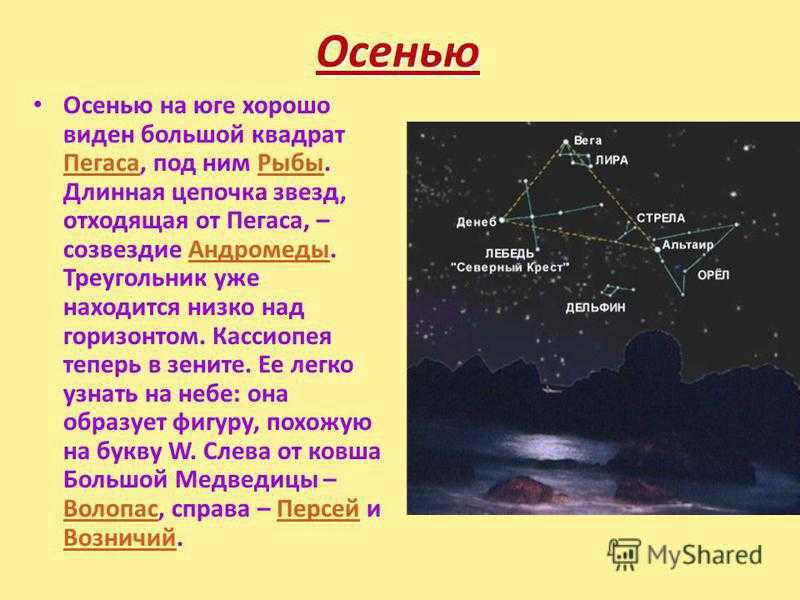
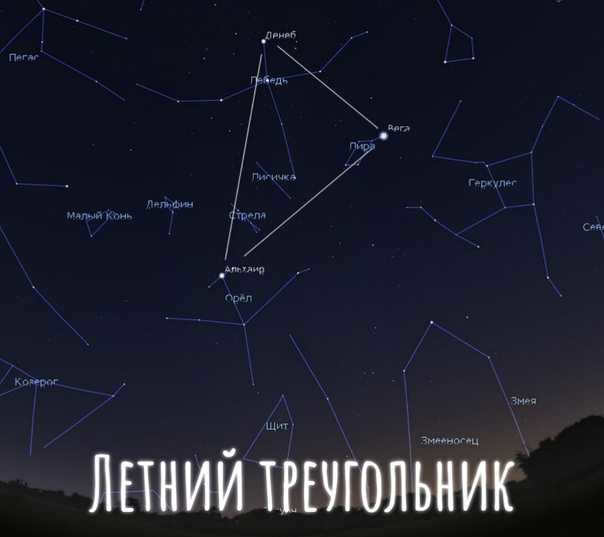
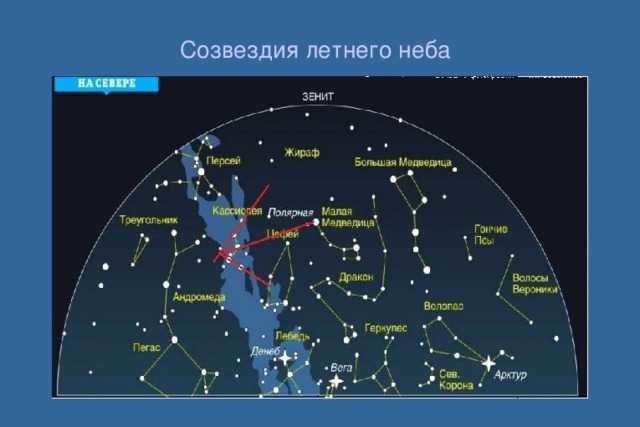
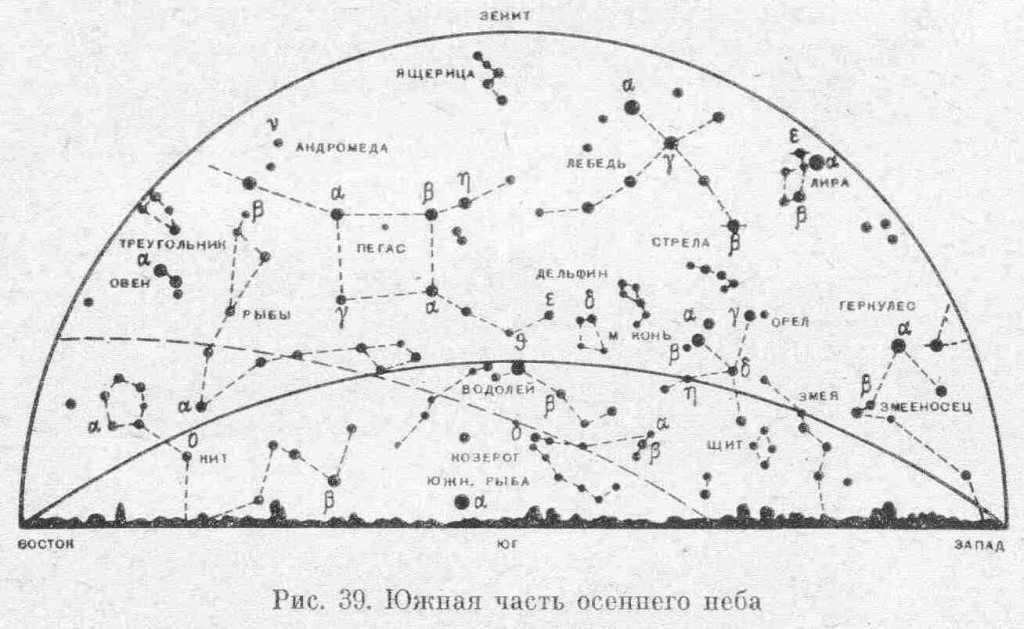
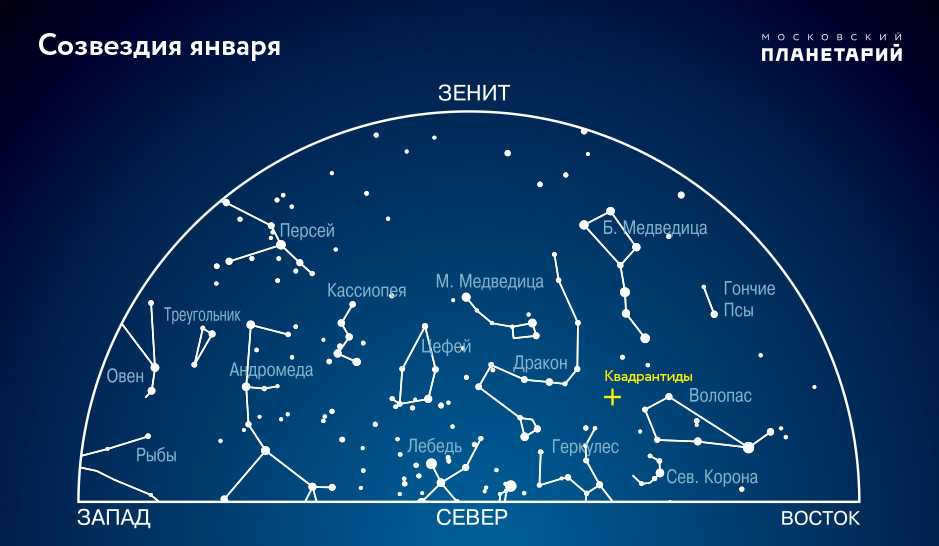
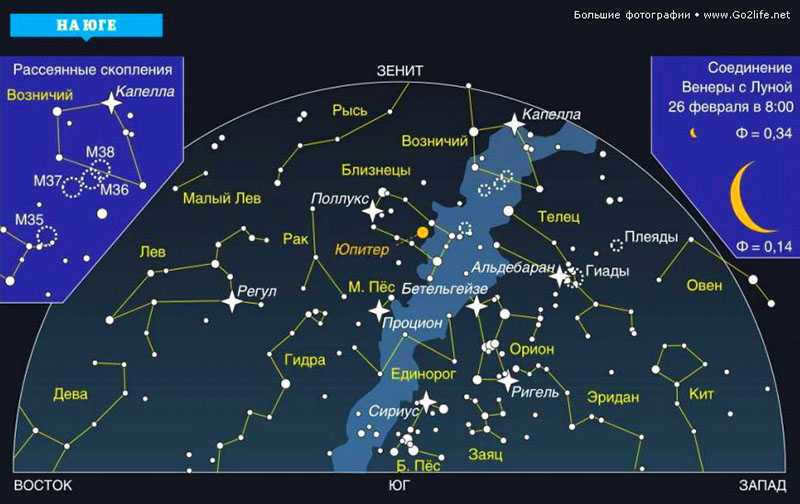
In Greek mythology, there is a tale about Andromeda, the daughter of King Cepheus and Queen Cassiopeia of Ethiopia. According to the myth, Andromeda was sacrificed by her father to a sea monster known as the Whale. This princess was renowned for her exceptional beauty and eventually became the wife of the legendary hero Perseus. Queen Cassiopeia, Andromeda’s mother, was also famous for her beauty, but unfortunately, she was known for her excessive vanity, which ultimately led to her being offered as a sacrifice to the sea monster. To appease the beast, King Cepheus and Queen Cassiopeia decided to chain their daughter Andromeda to a rock. However, Perseus came to her rescue, breaking her free from the chains and slaying the monster. The two lovers then got married and settled on Perseus’ home island.
Autumn constellations in the sky
One of the notable constellations in the southern sky during autumn is Pegasus, which forms a large rectangle shape that is almost square. This particular formation is often referred to as the “Great Rectangle of Pegasus”.
Starting from the upper left corner of this rectangle, known as the alpha of Pegasus, there are a cluster of stars that resemble the handle of the Big Dipper. These stars belong to the constellation Andromeda, which is also visible during this season. Interestingly, just above these stars, there is a faint patch of light known as the Andromeda Galaxy, M31, which is a well-known astronomical object.
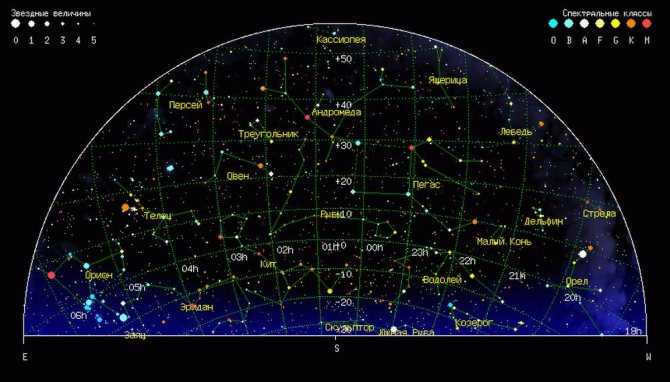
Constellations in the autumn sky. Southern region.
If we shift our gaze to the left along Andromeda, we can observe the prominent alpha star of Perseus. This star forms a distinct triangle with Beta and Delta.
Beneath Andromeda, we can clearly see a pair of bright stars from the Aries constellation. Between Aries and Andromeda, there is a small triangle of relatively dim stars – this constellation is known as Triangle.
Above Pegasus, situated above its upper right corner, there is another unremarkable constellation – the Lizard.
Beneath Pegasus, to the right of Aries, lies the Pisces constellation. There are no prominent stars in this area either.

